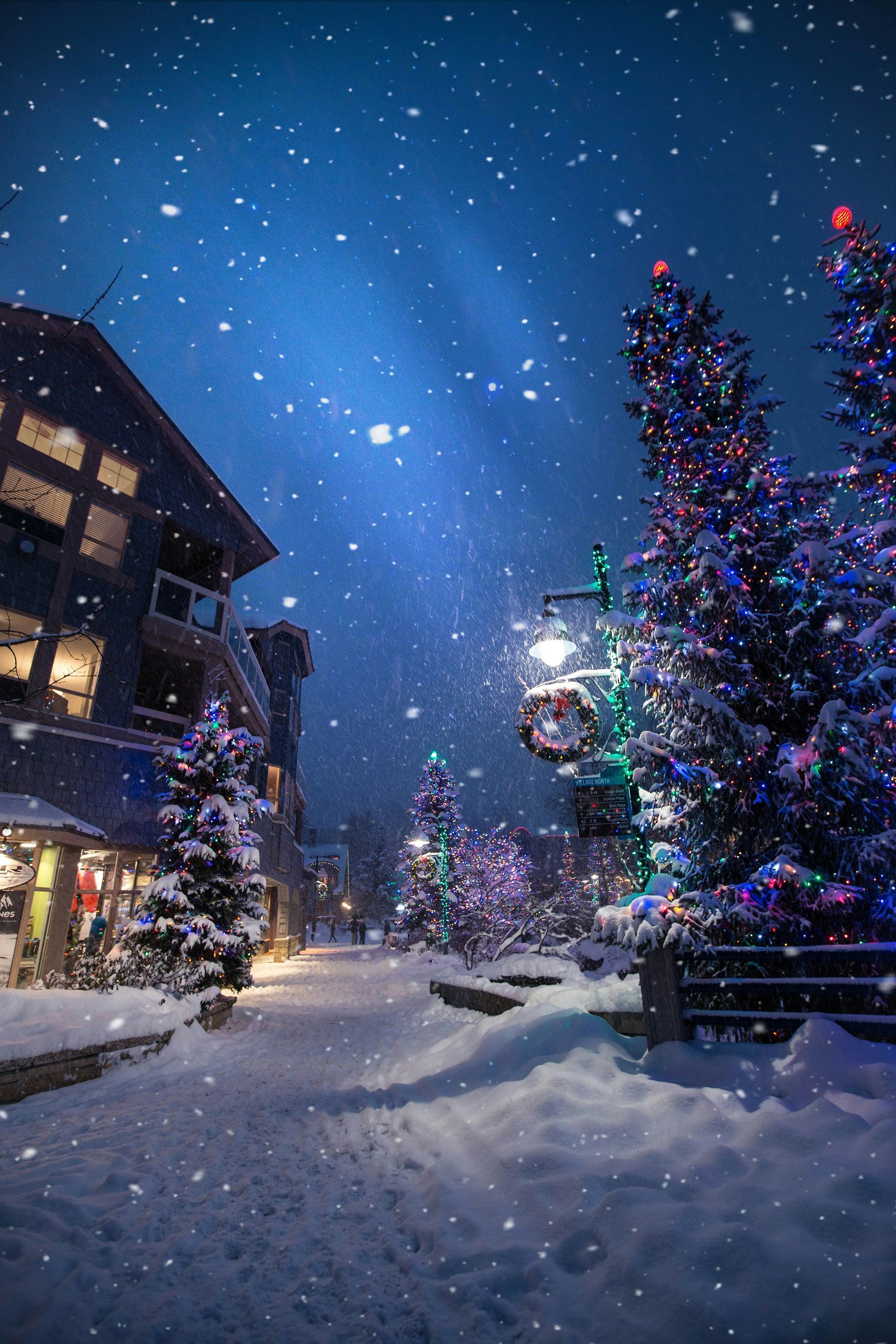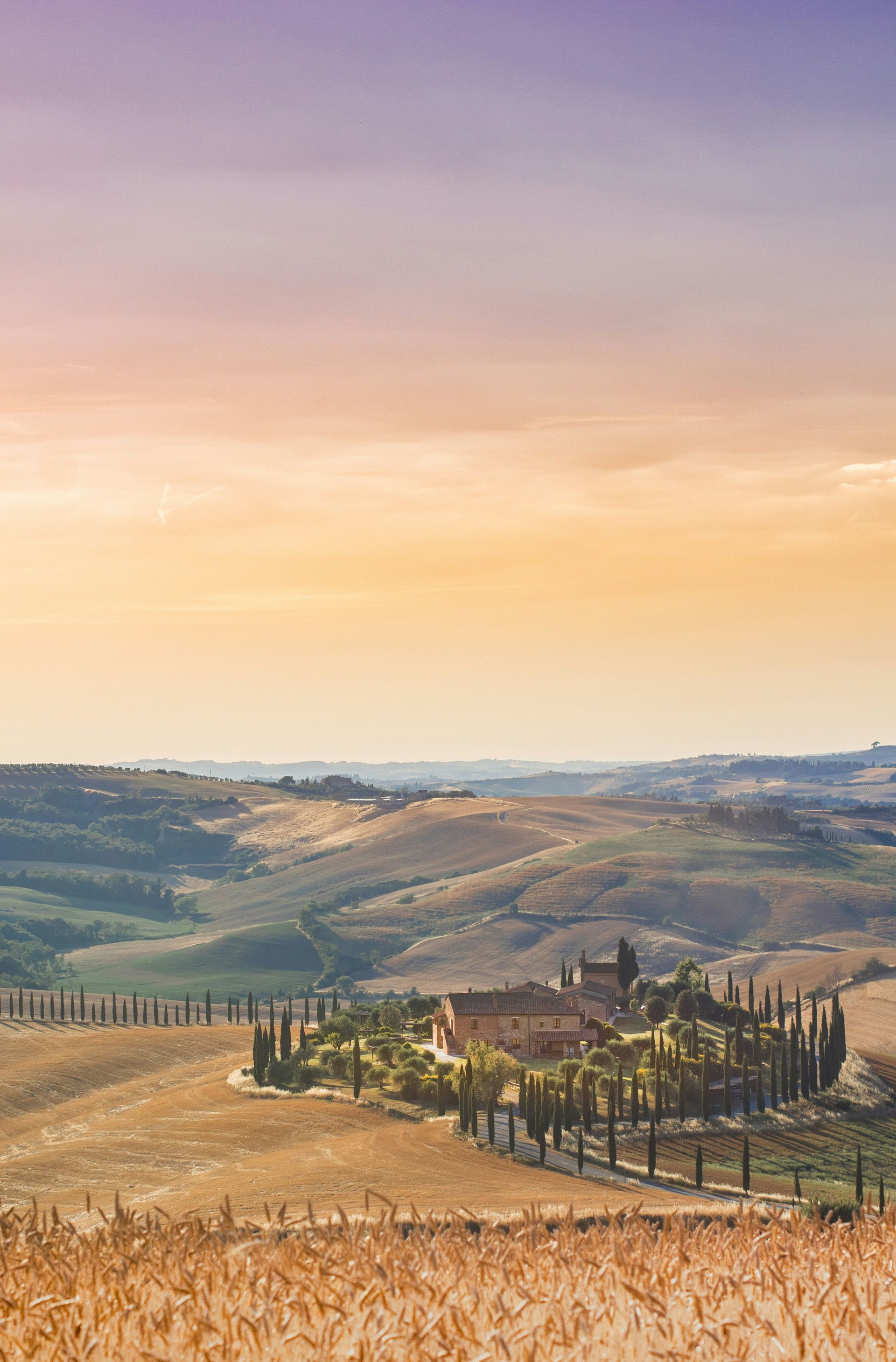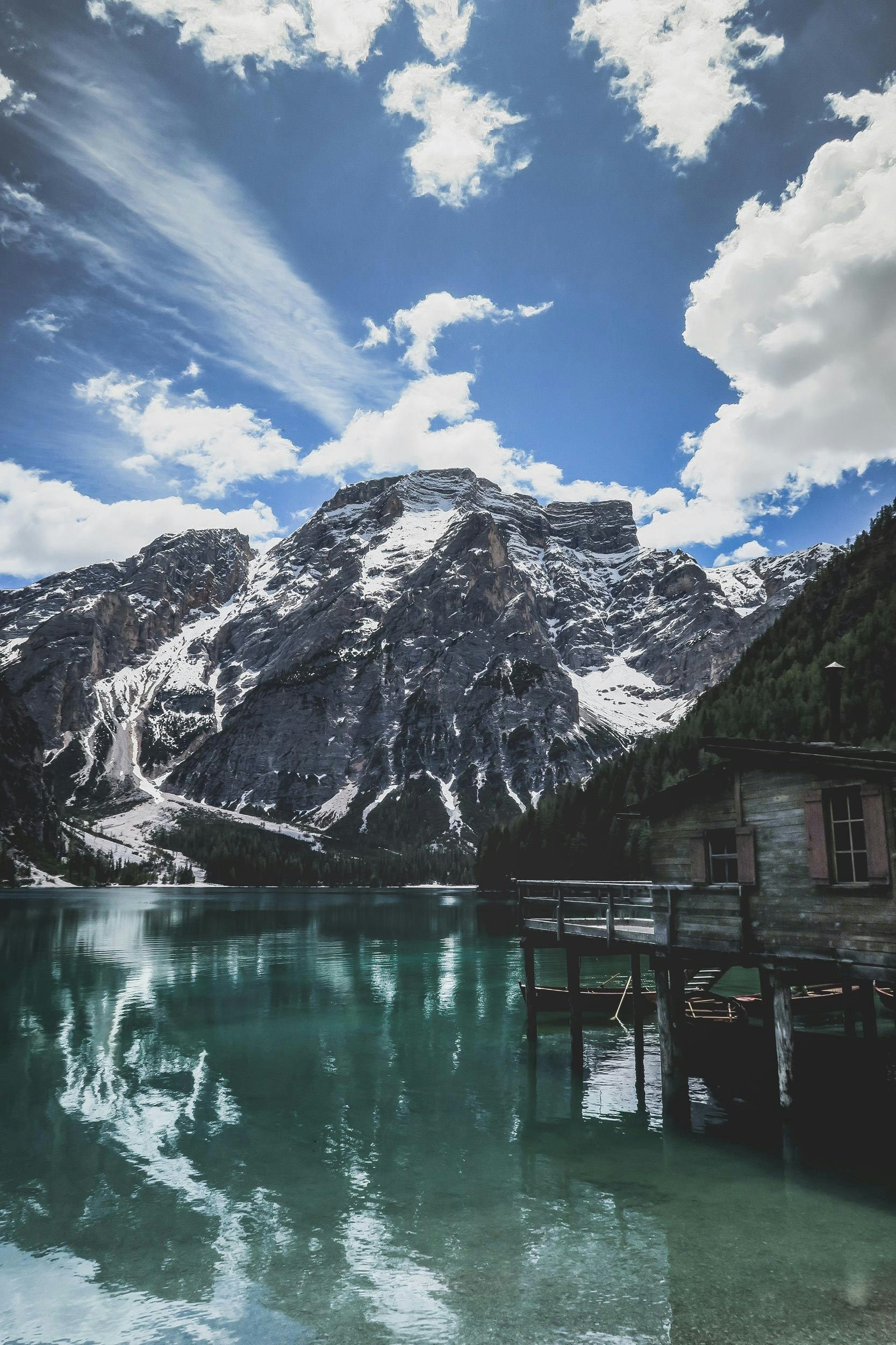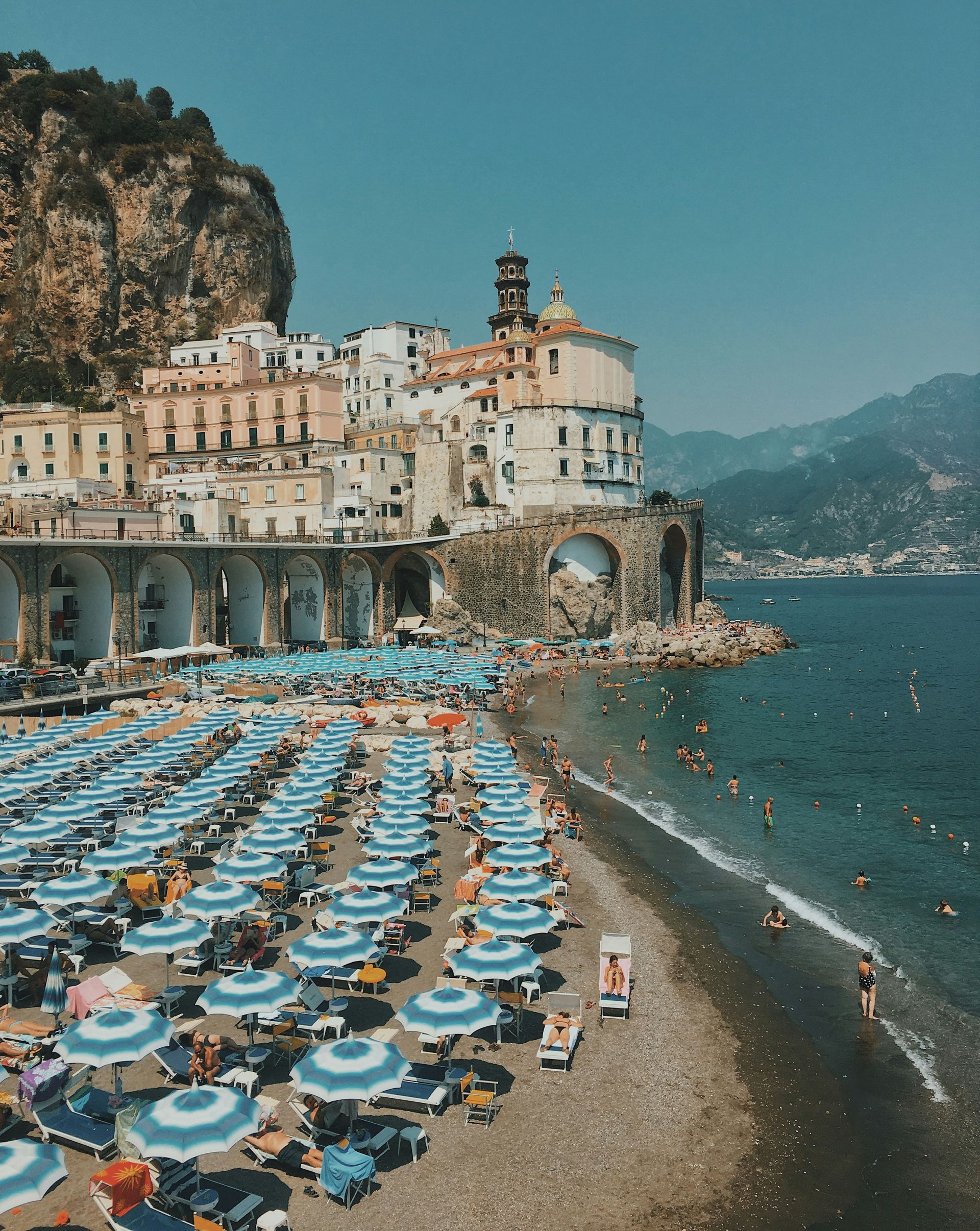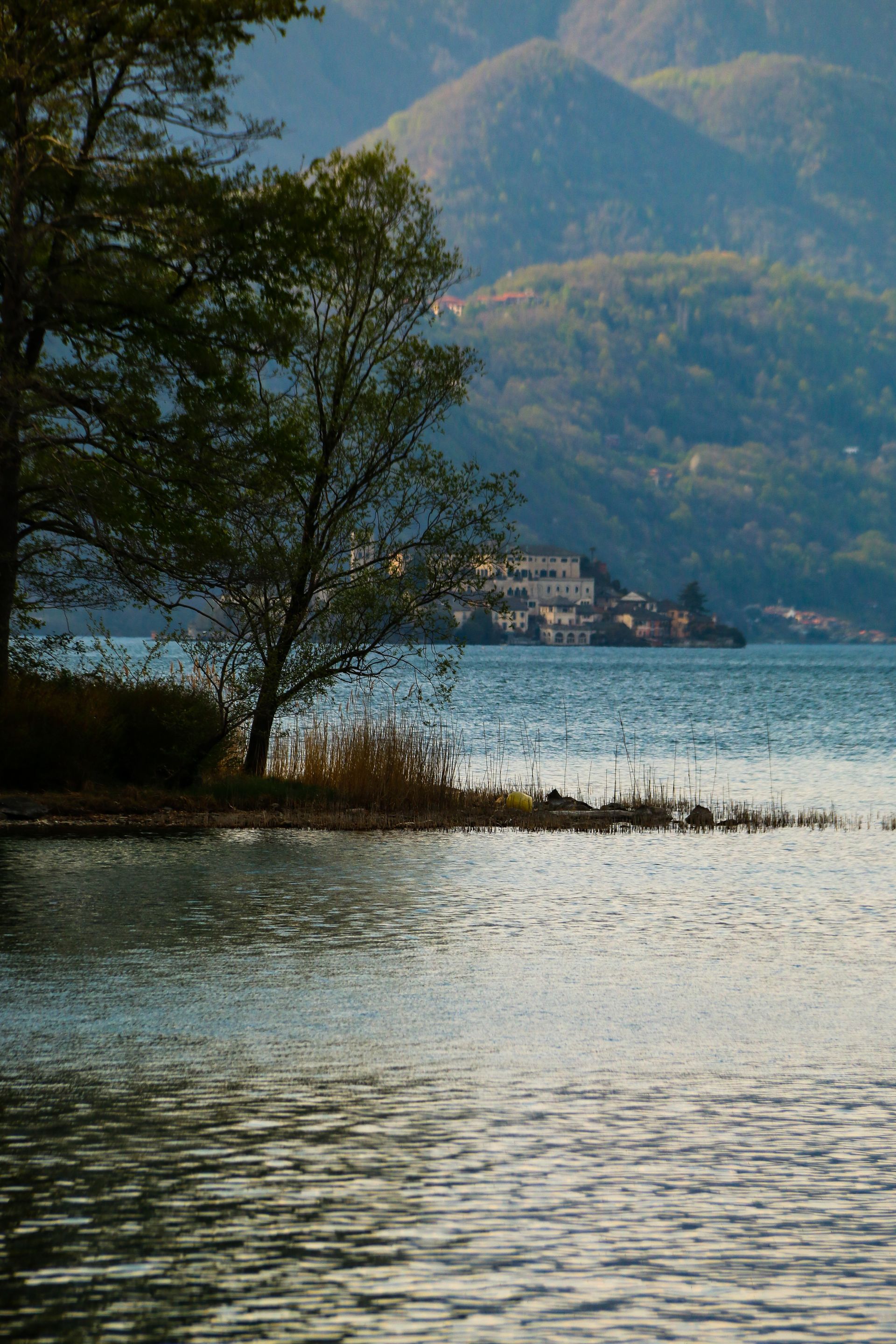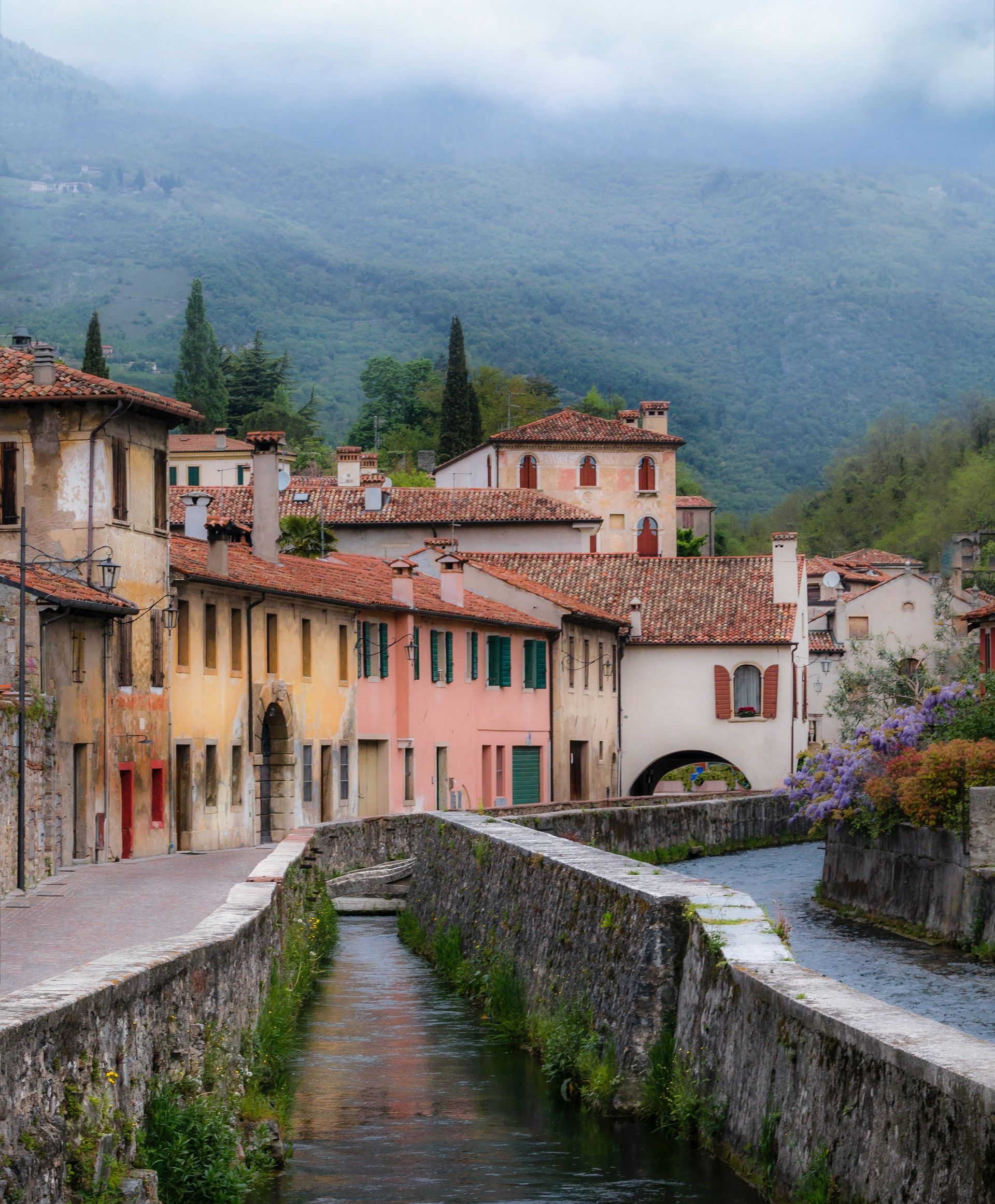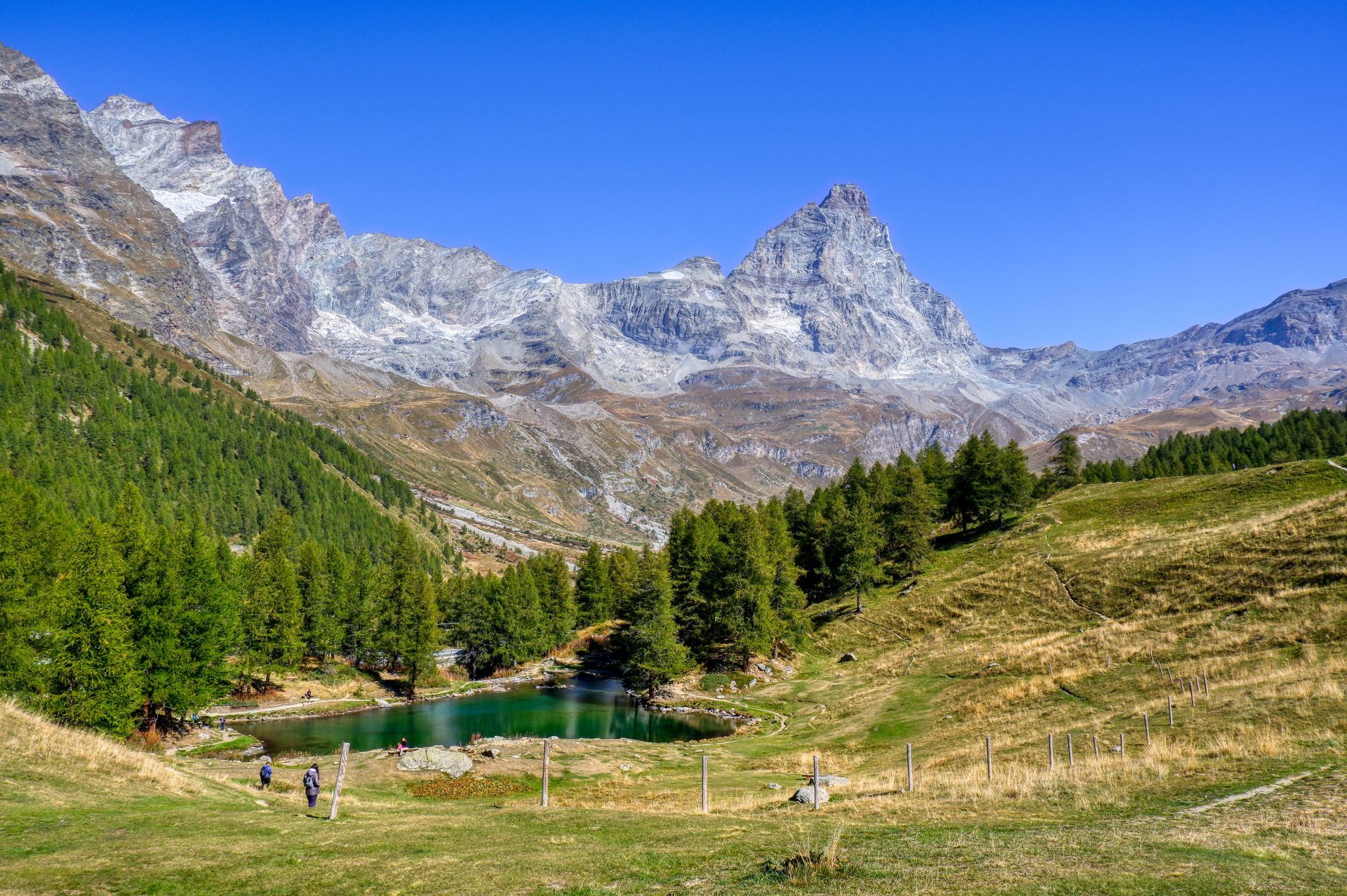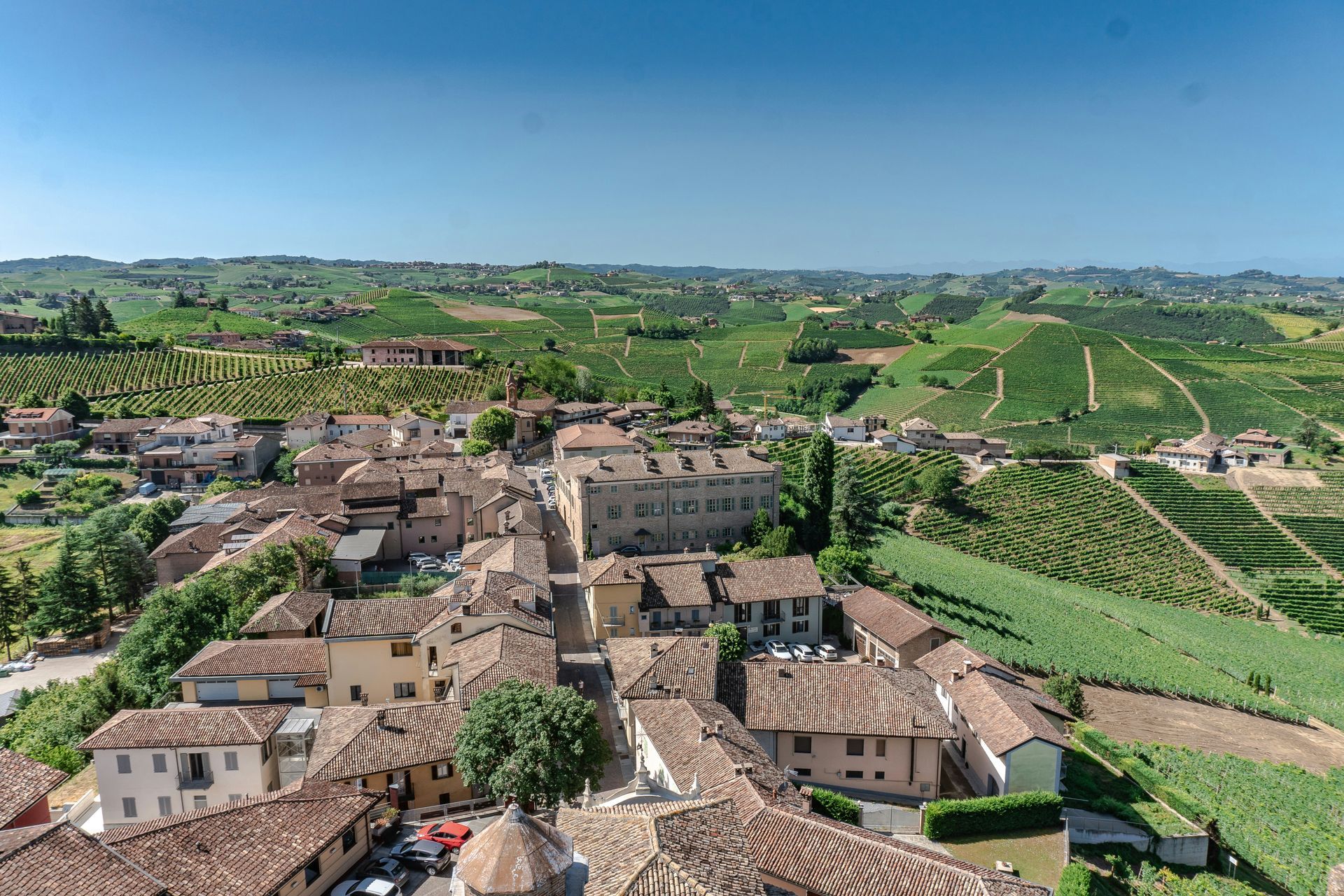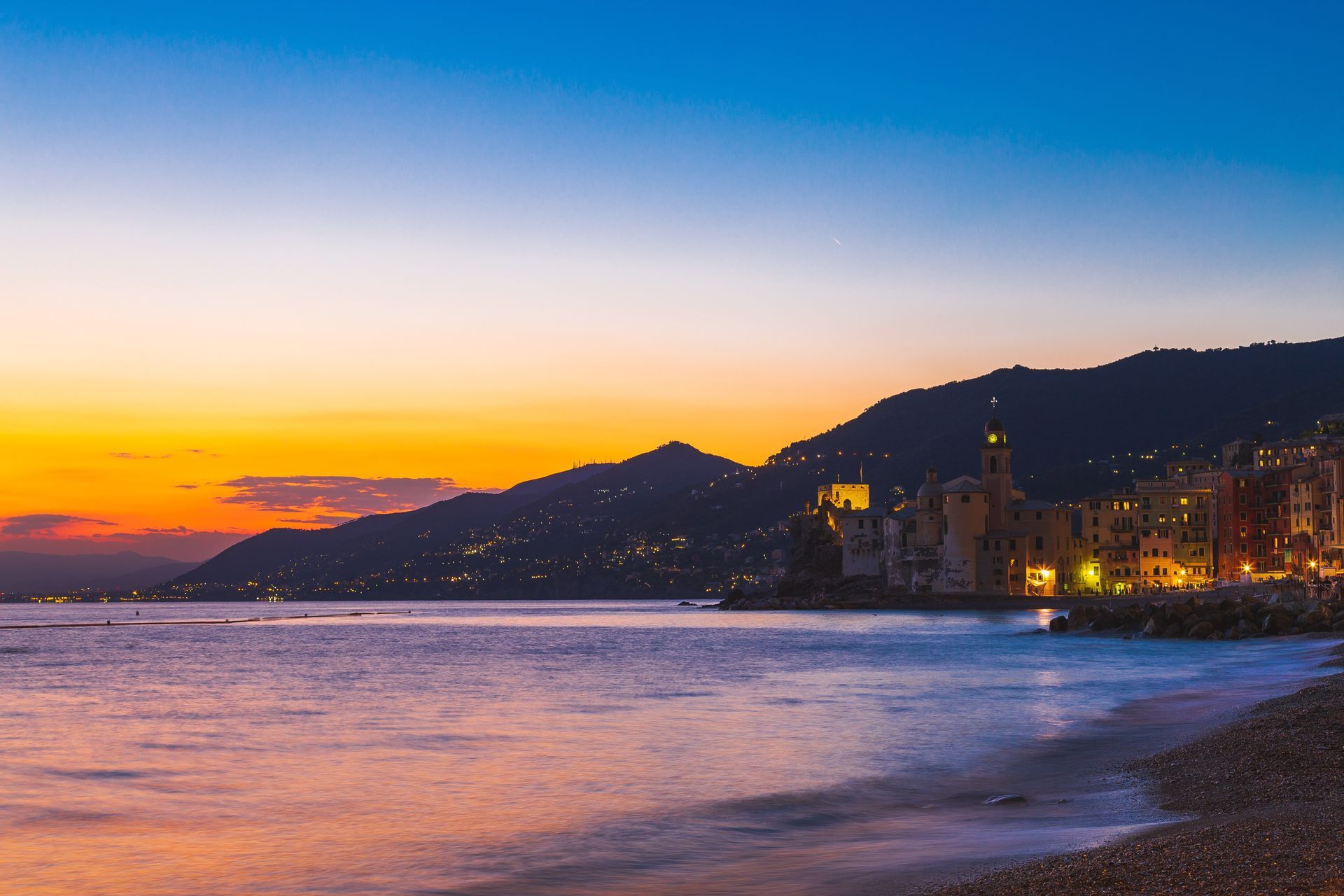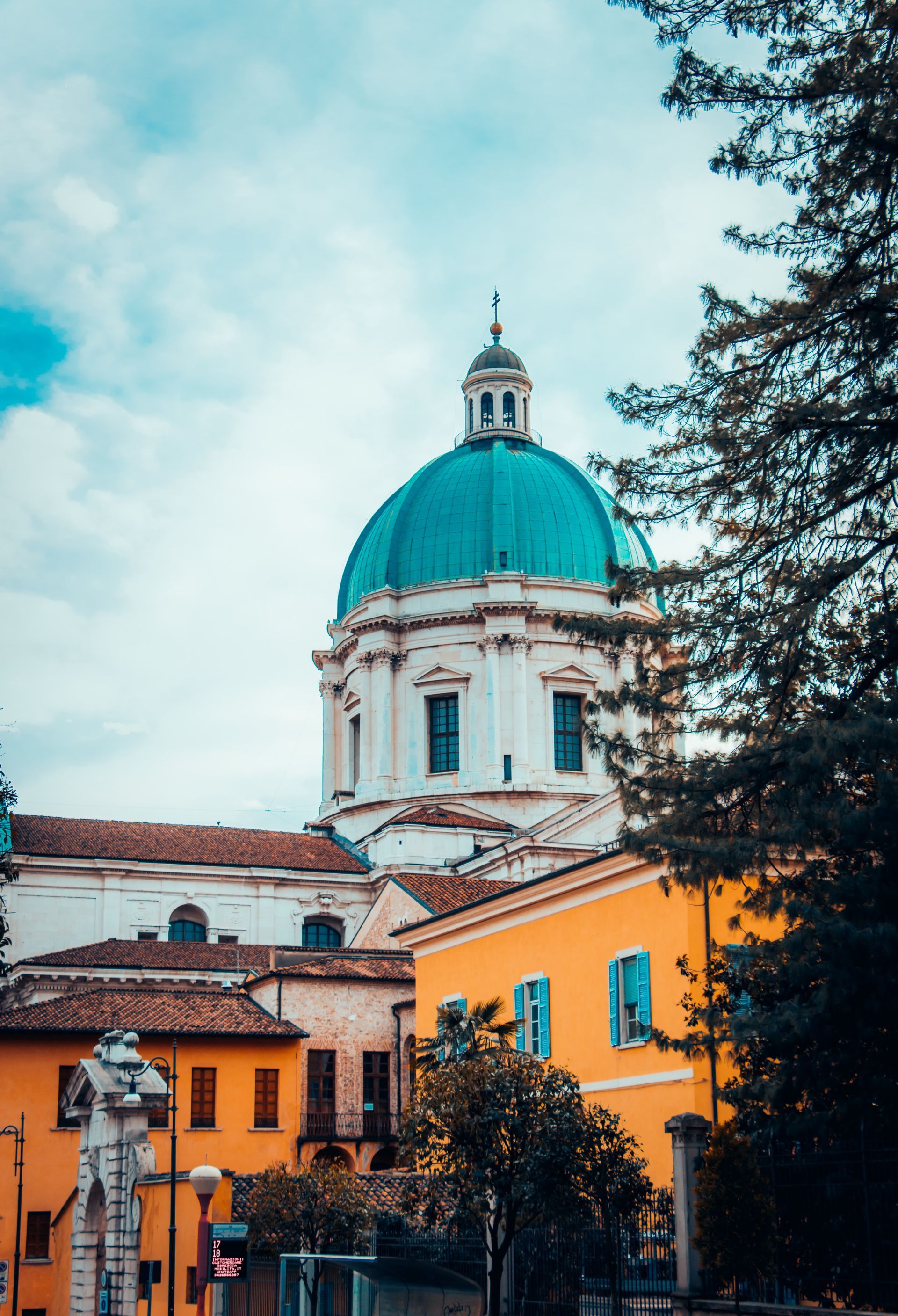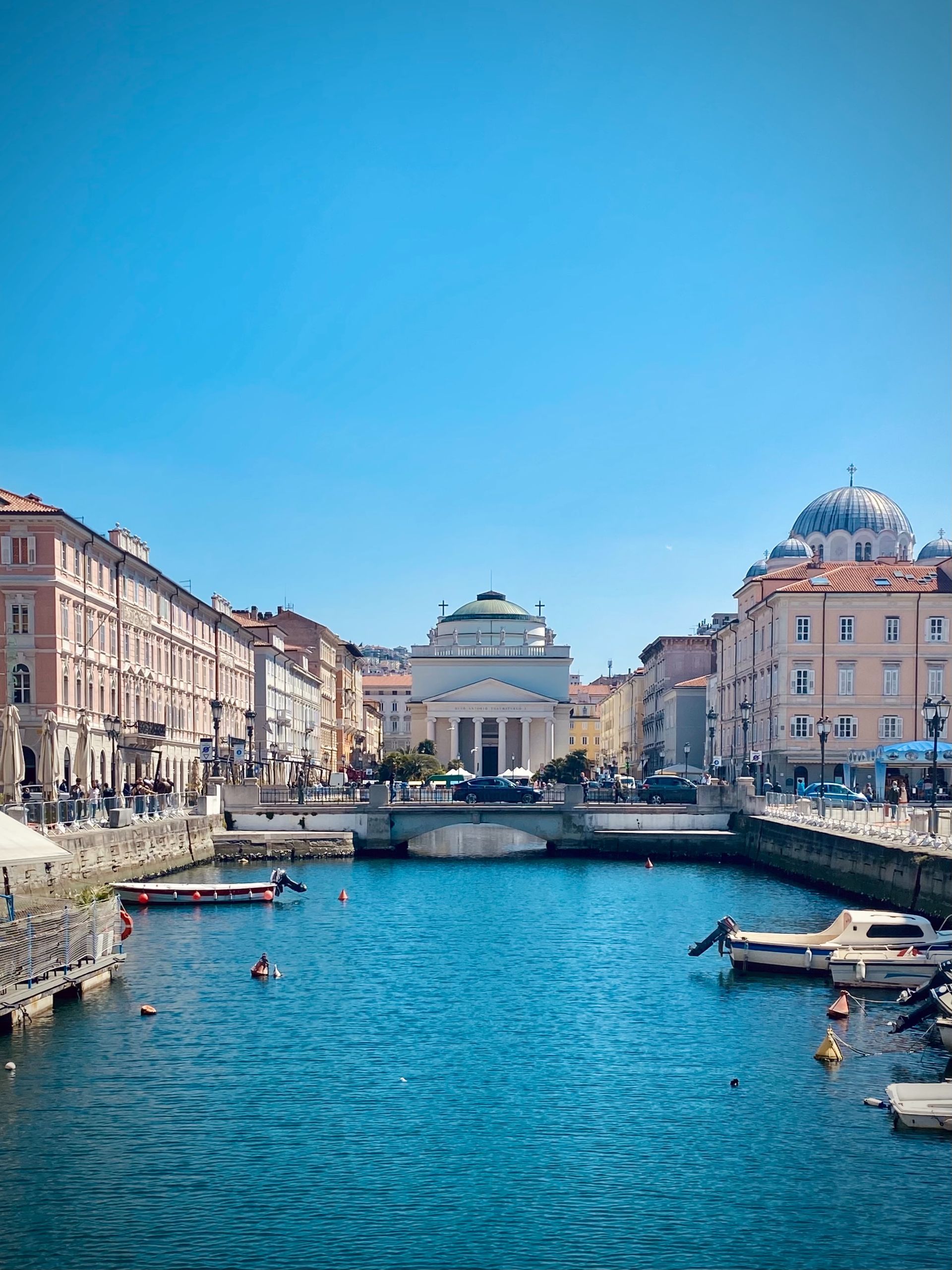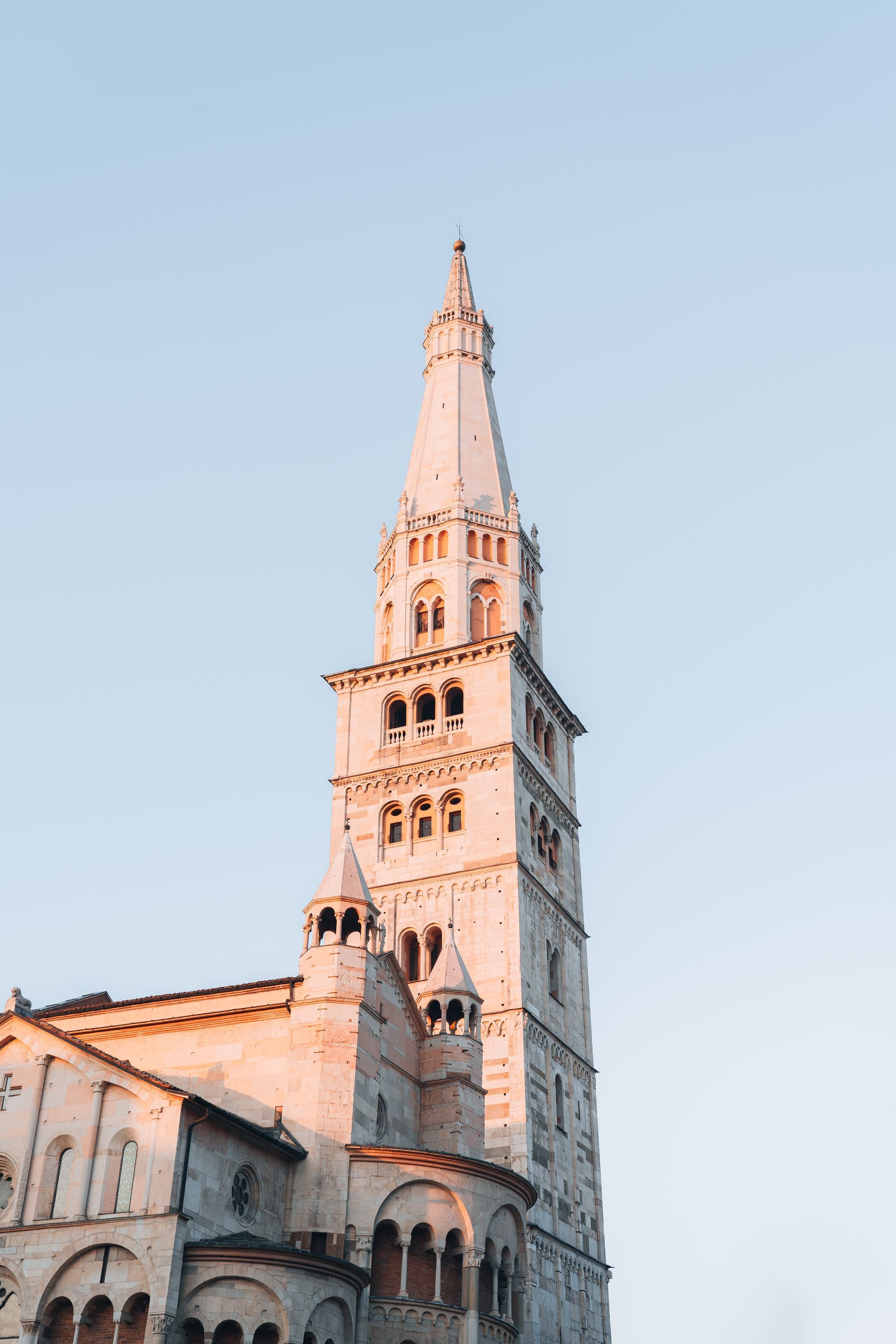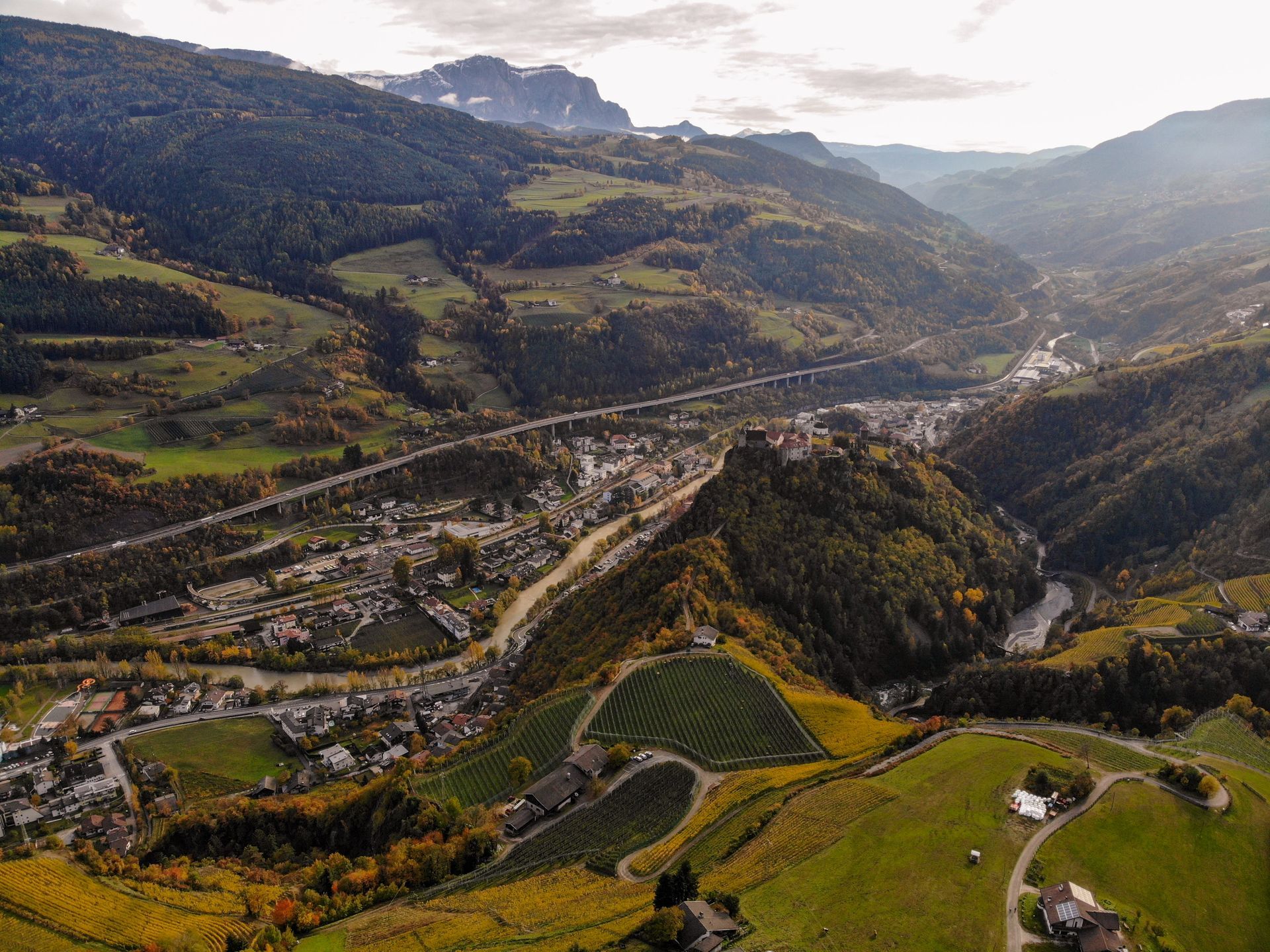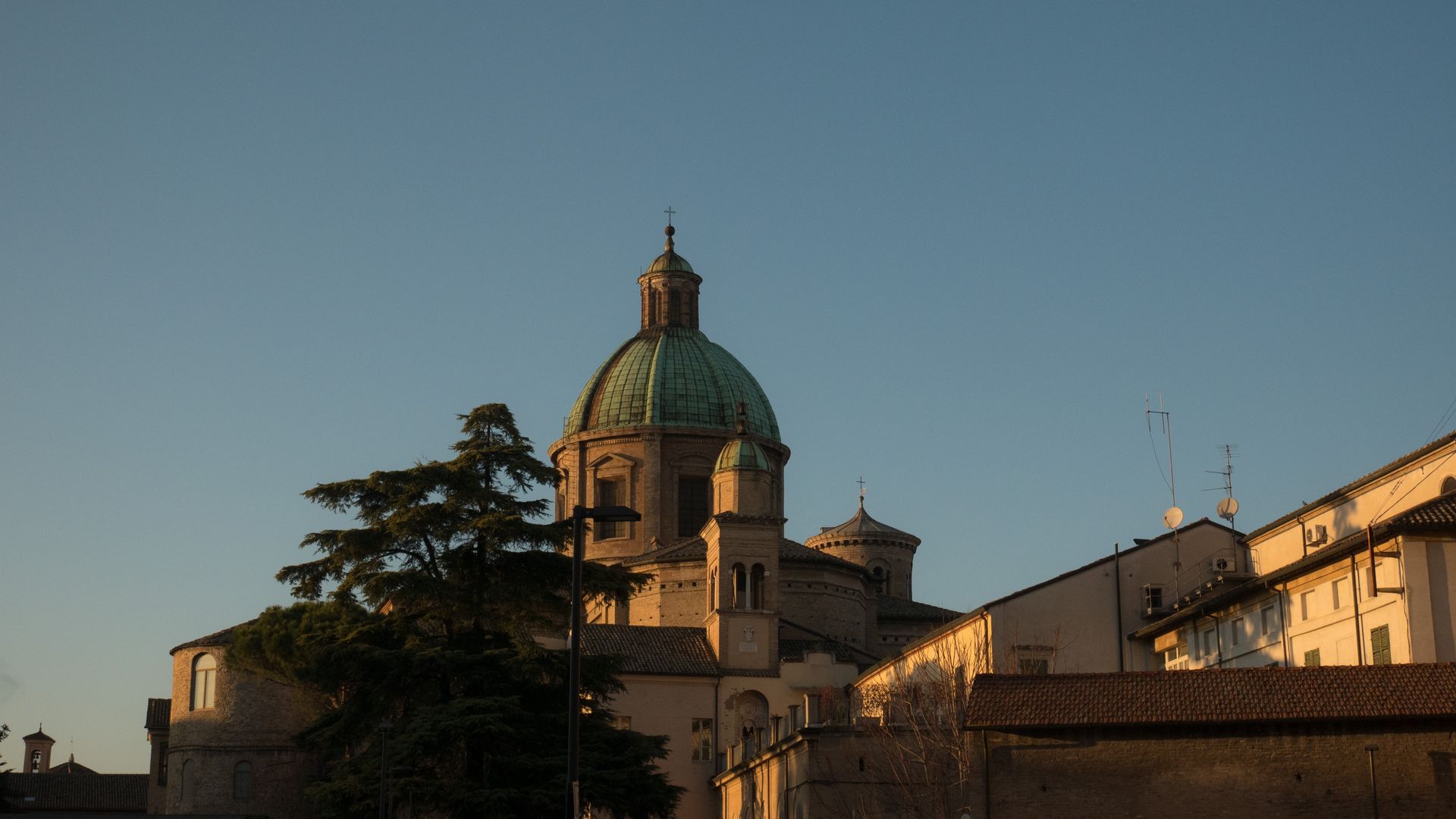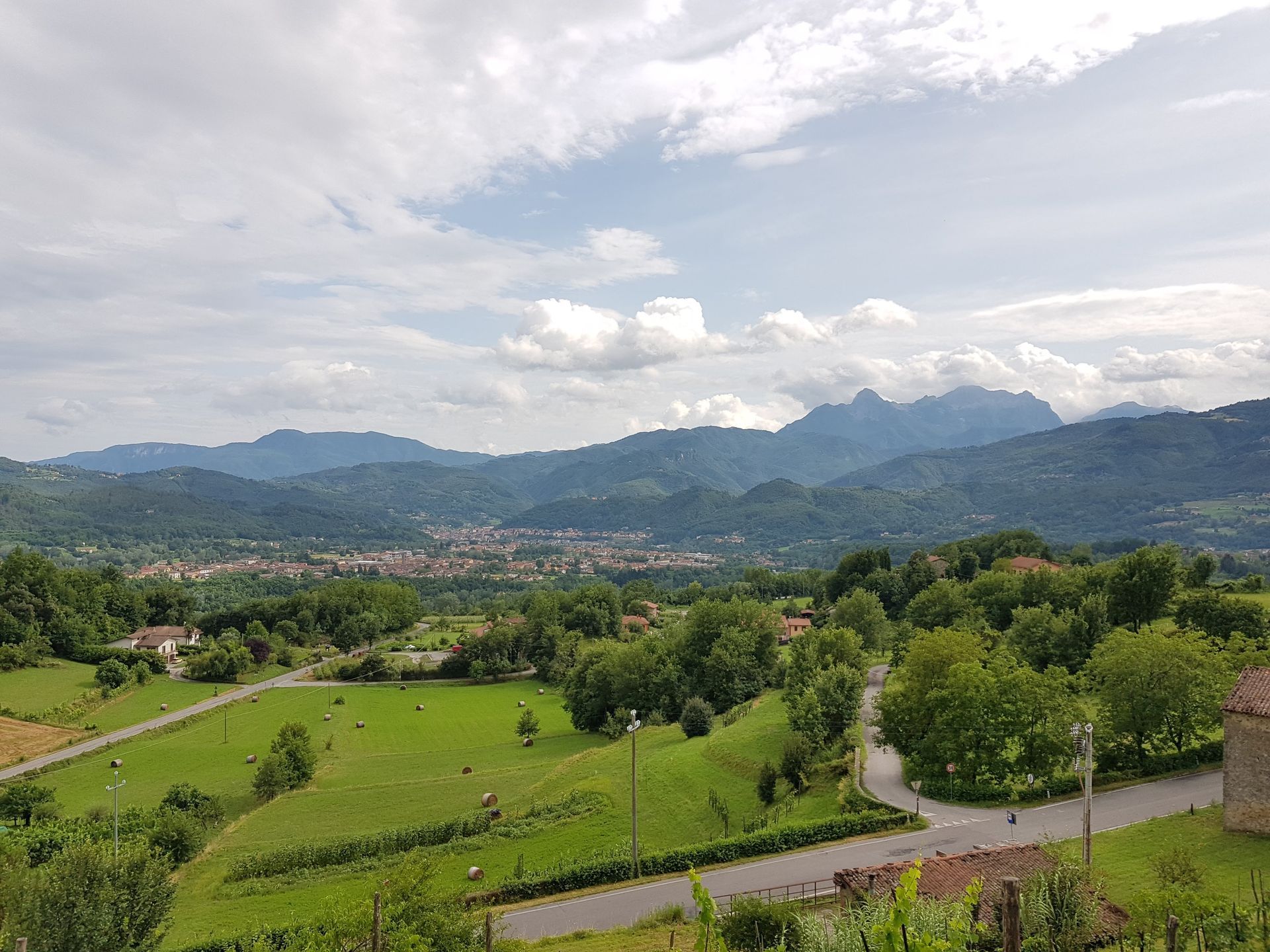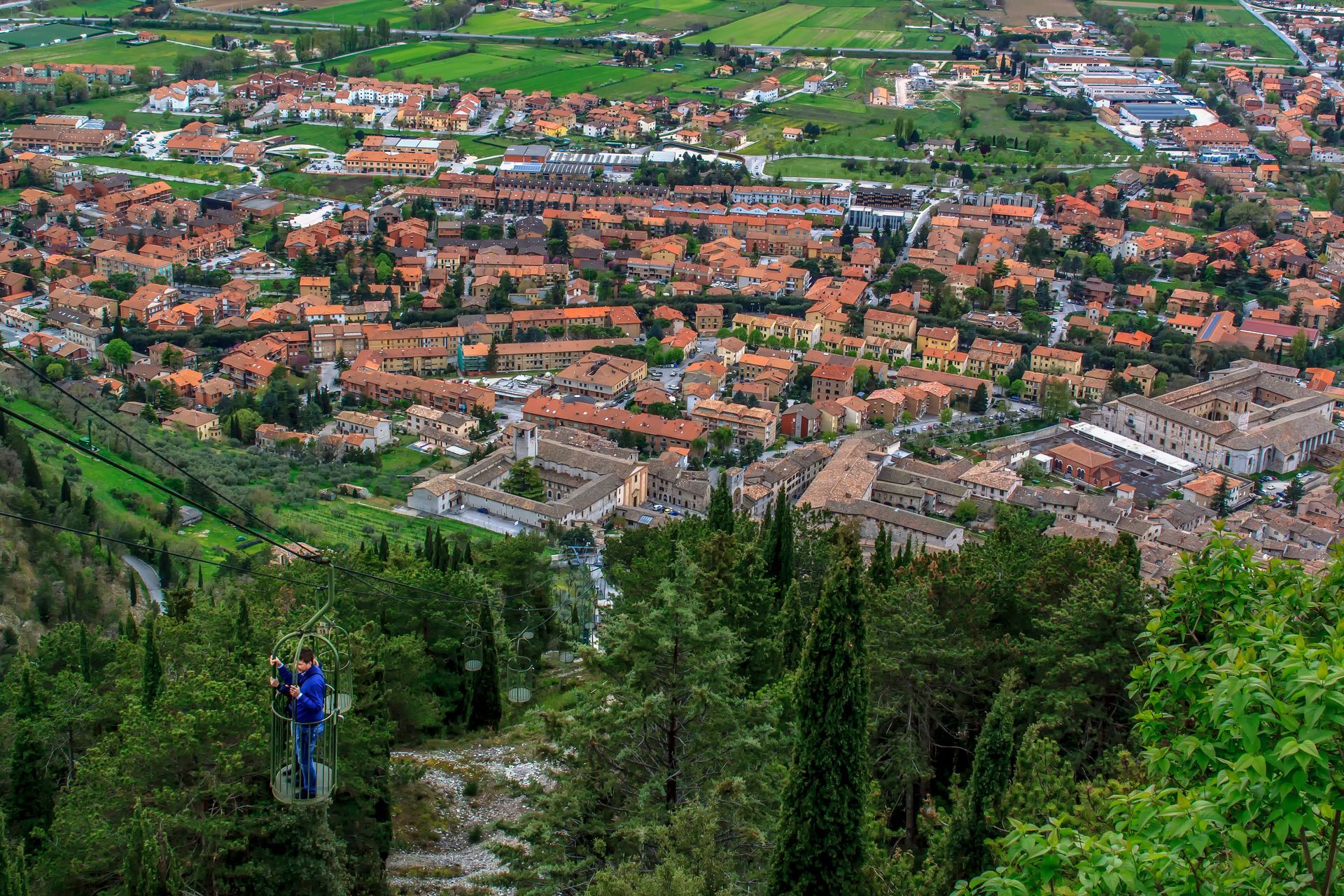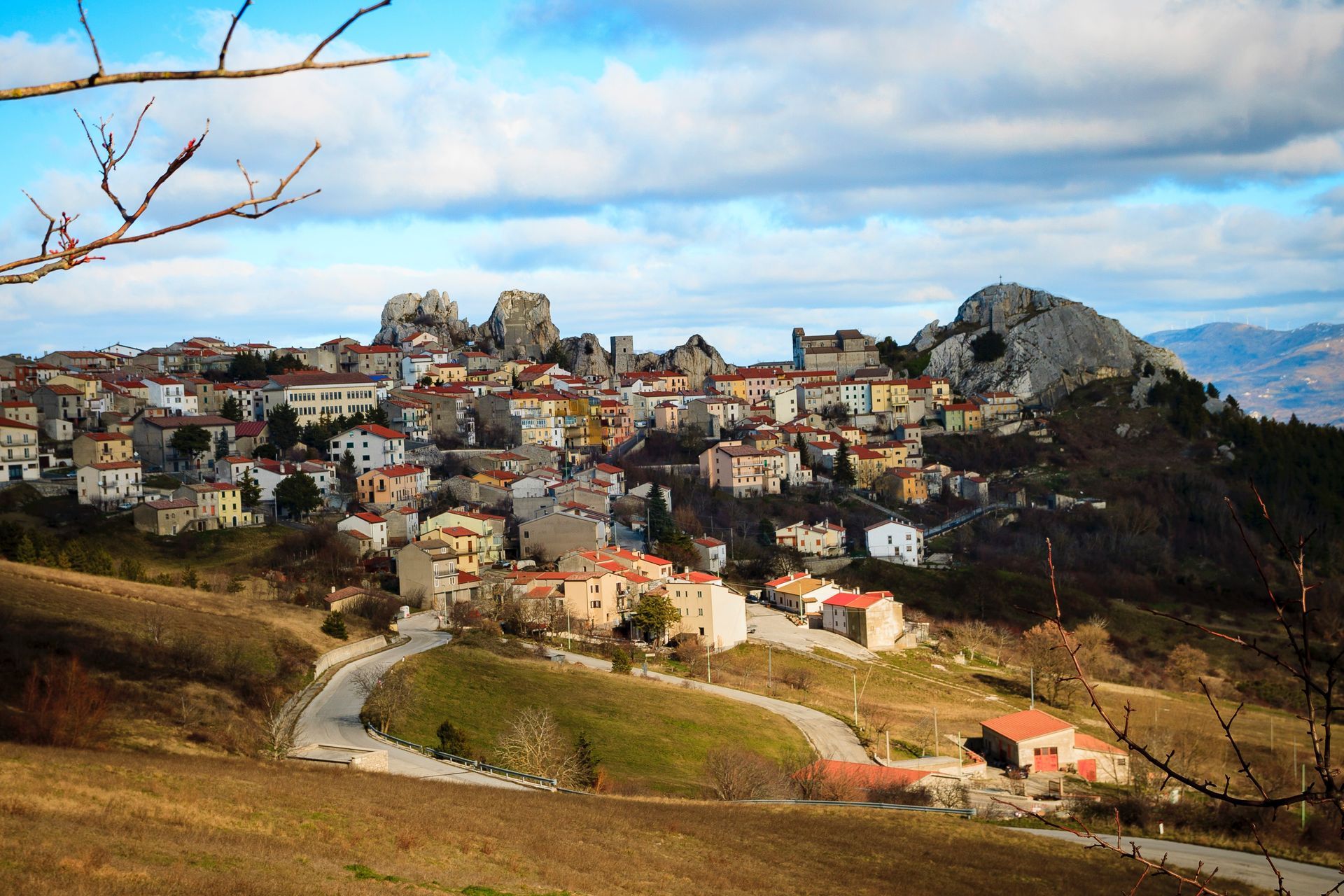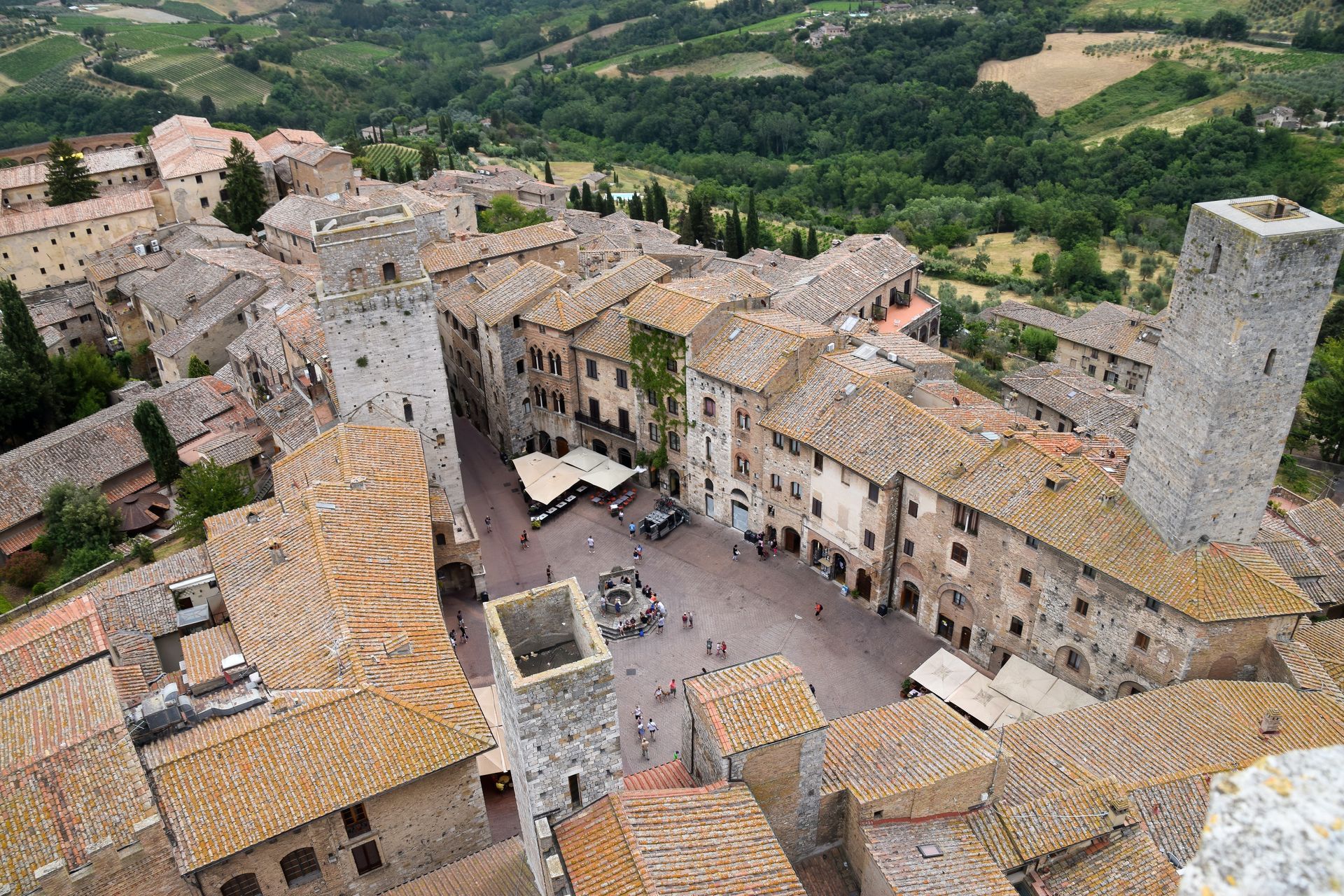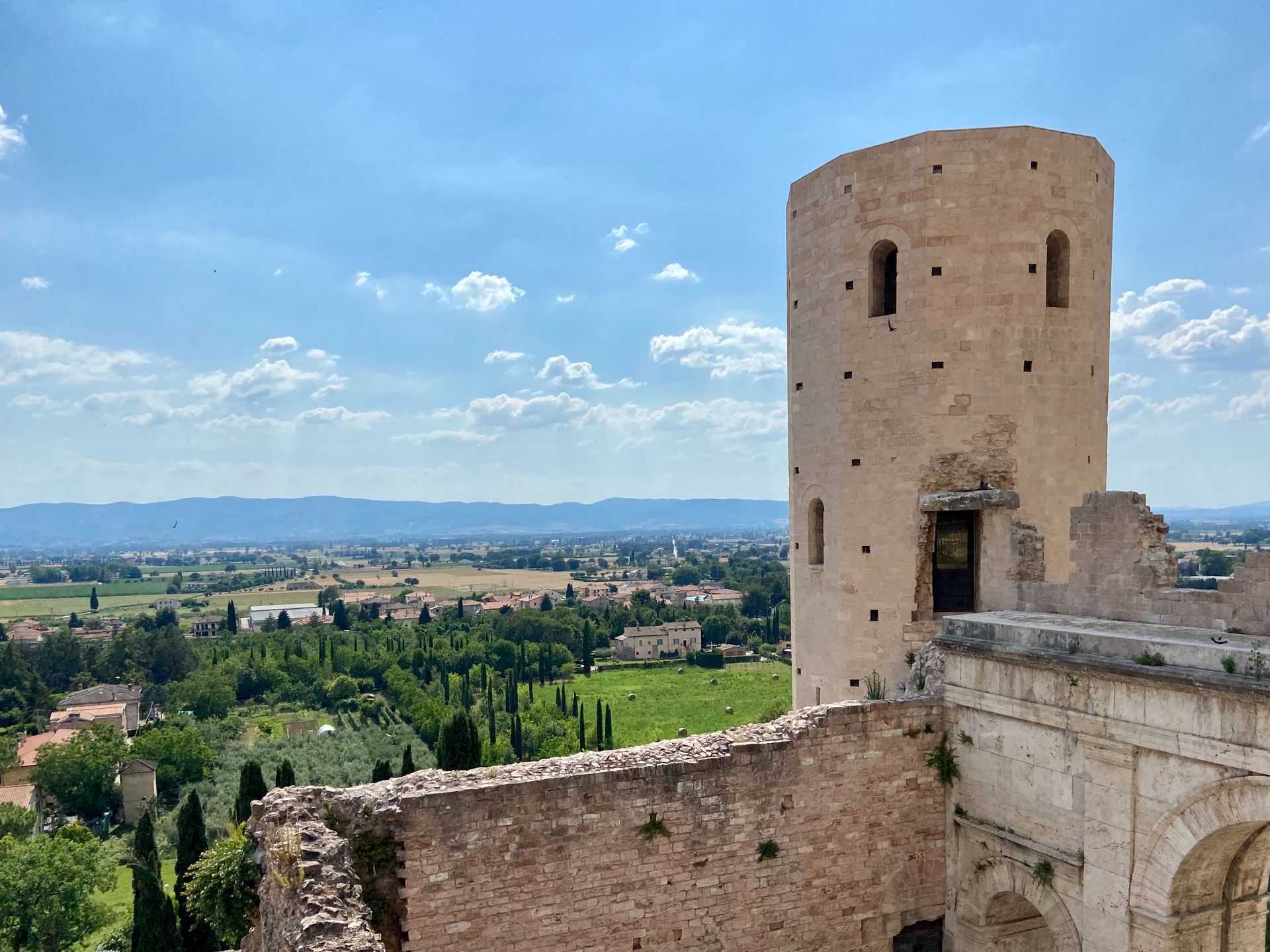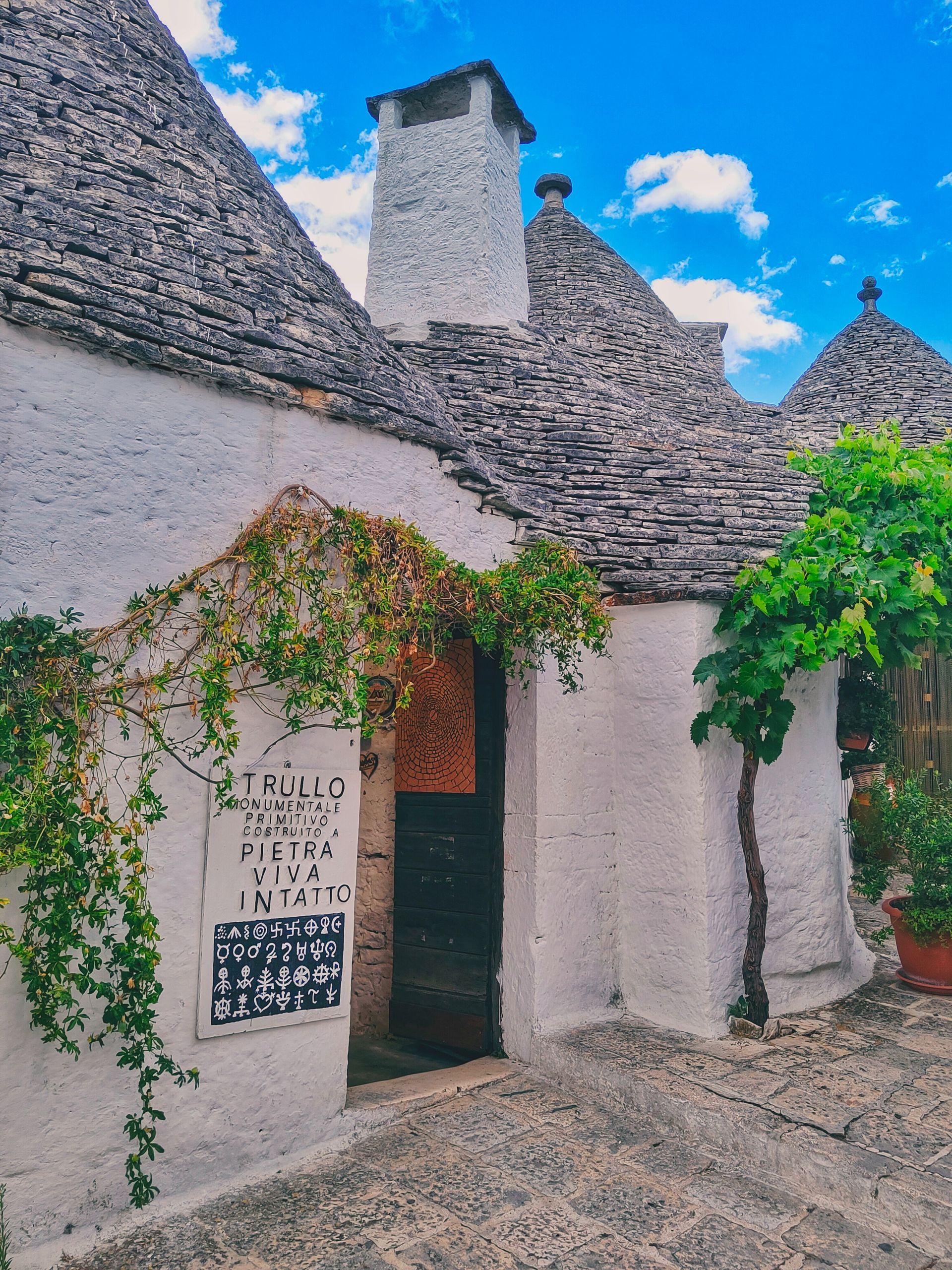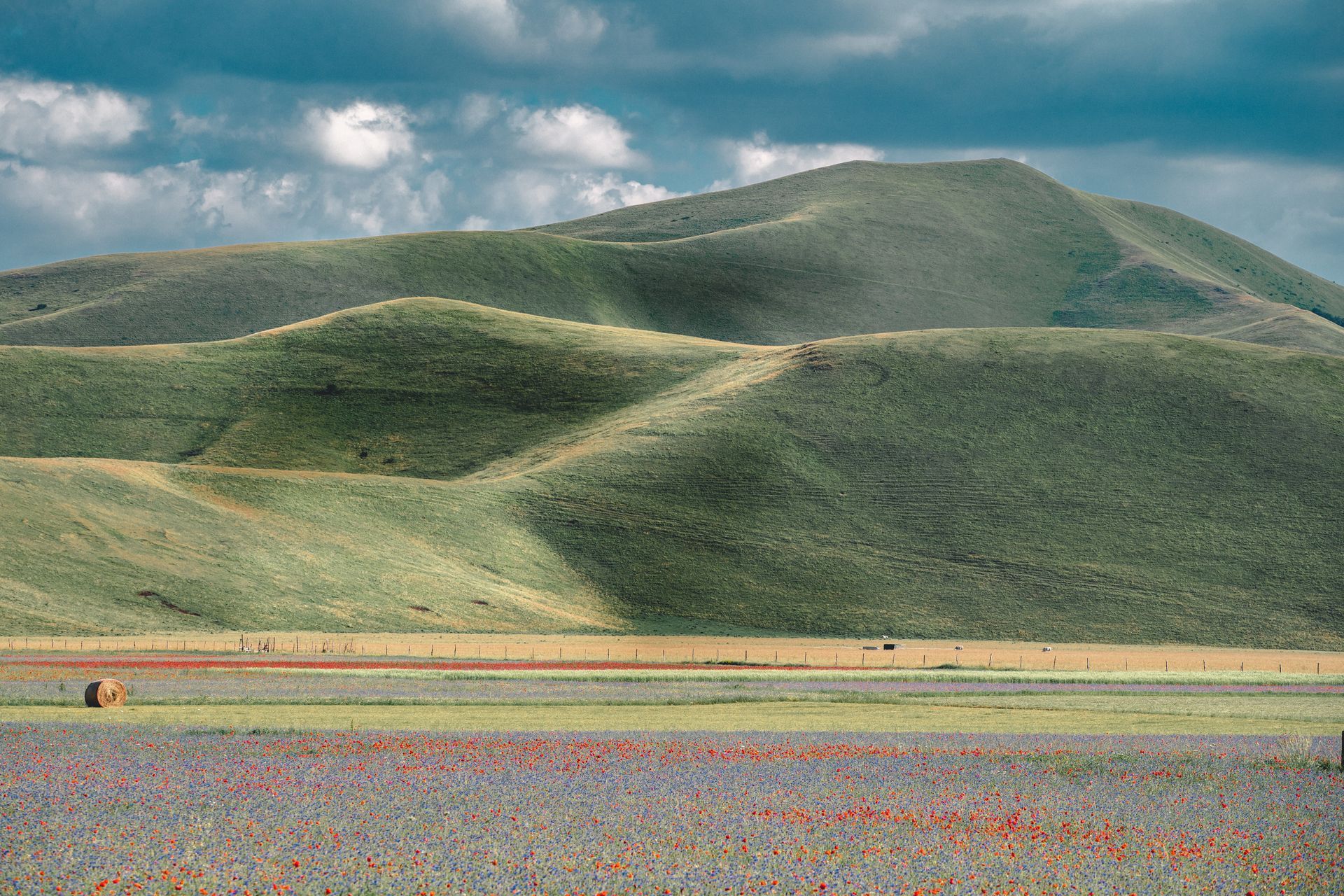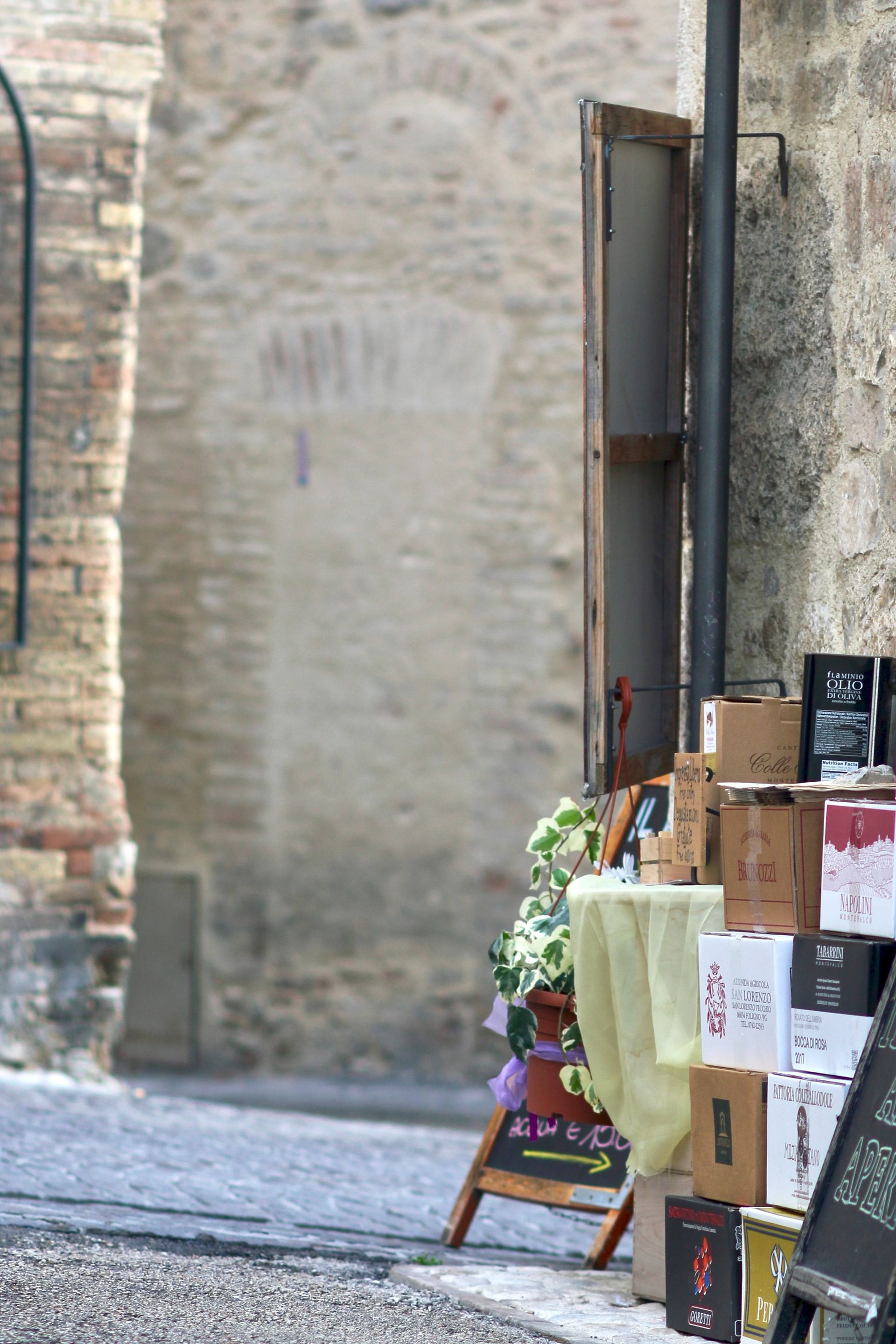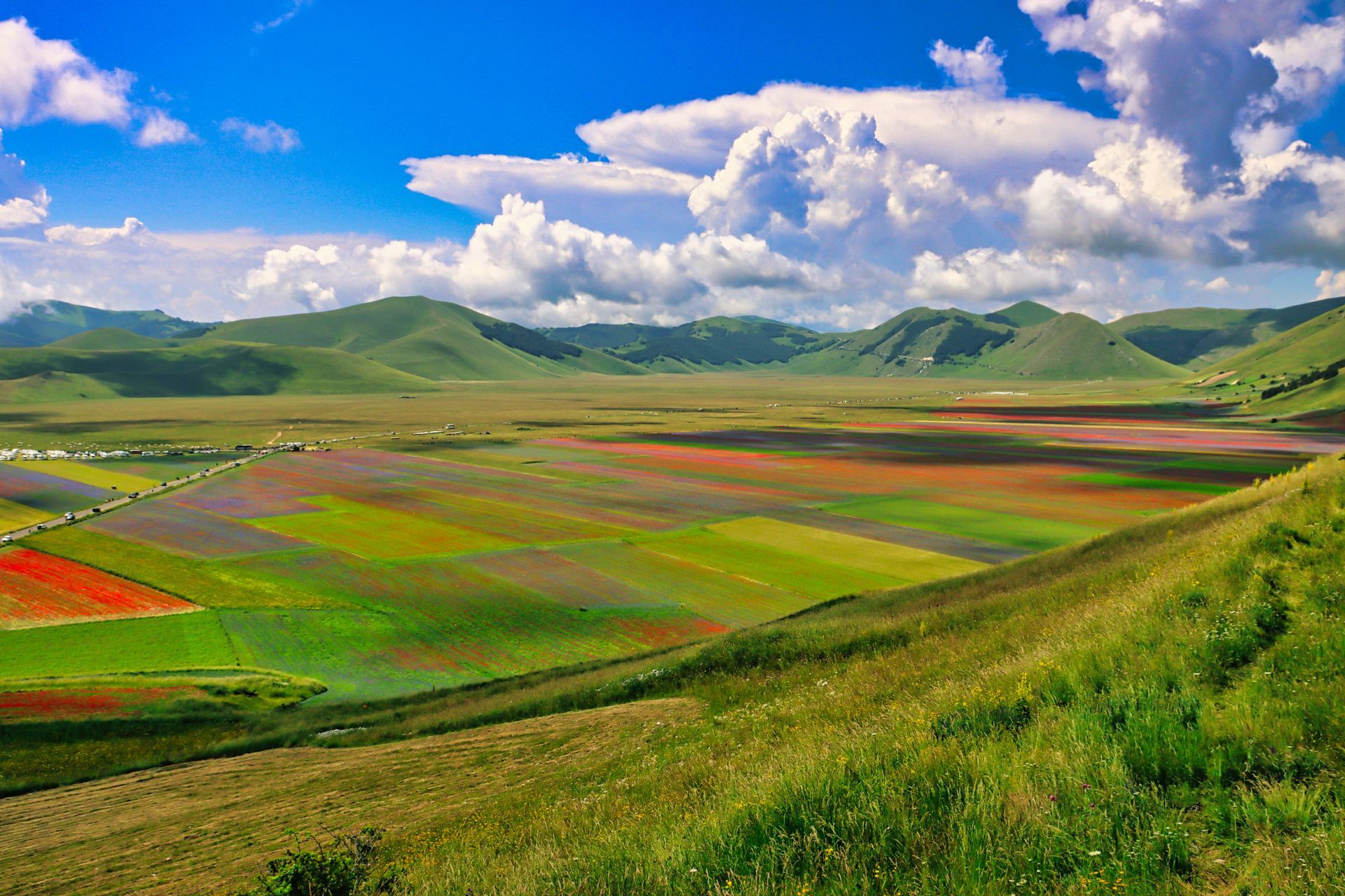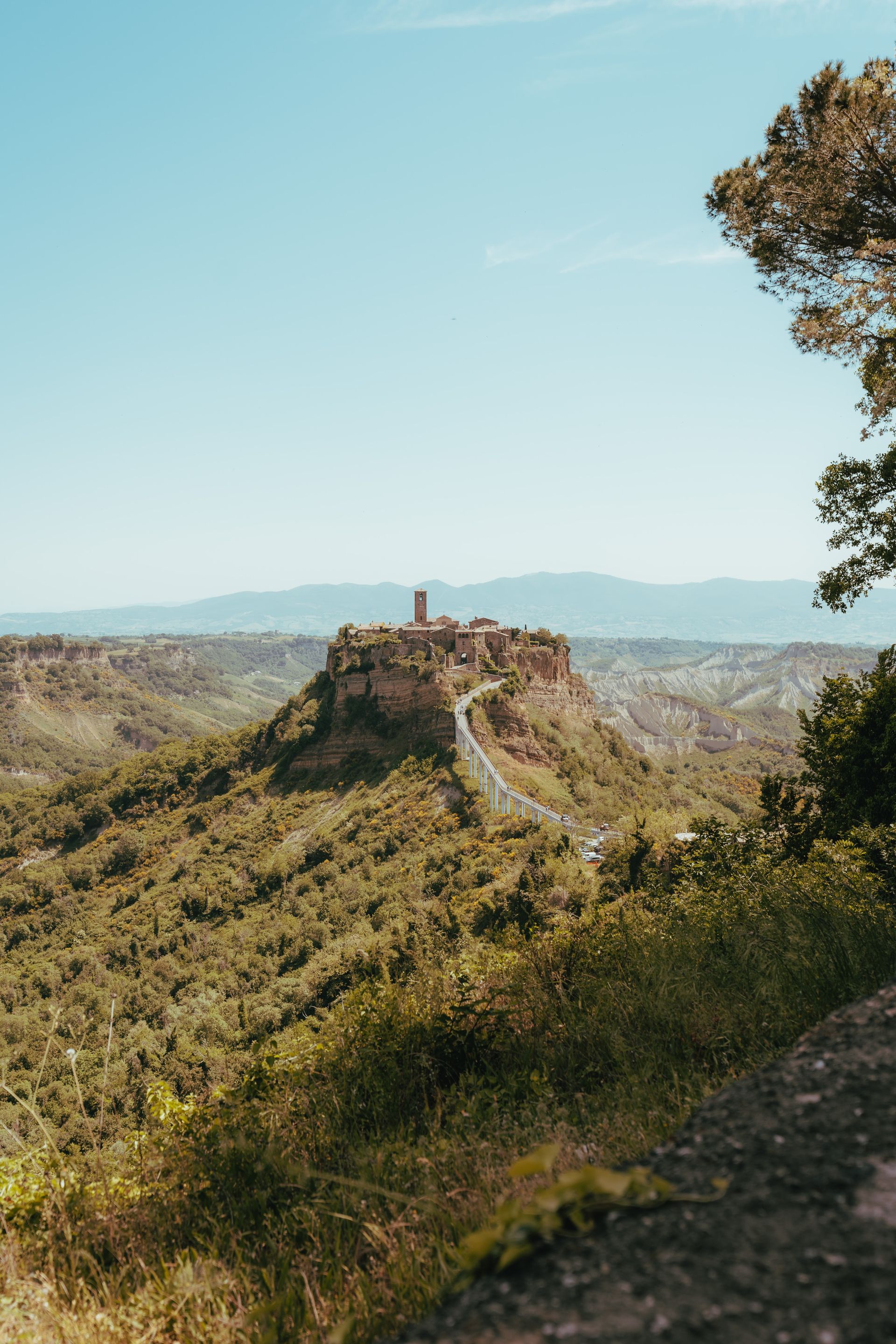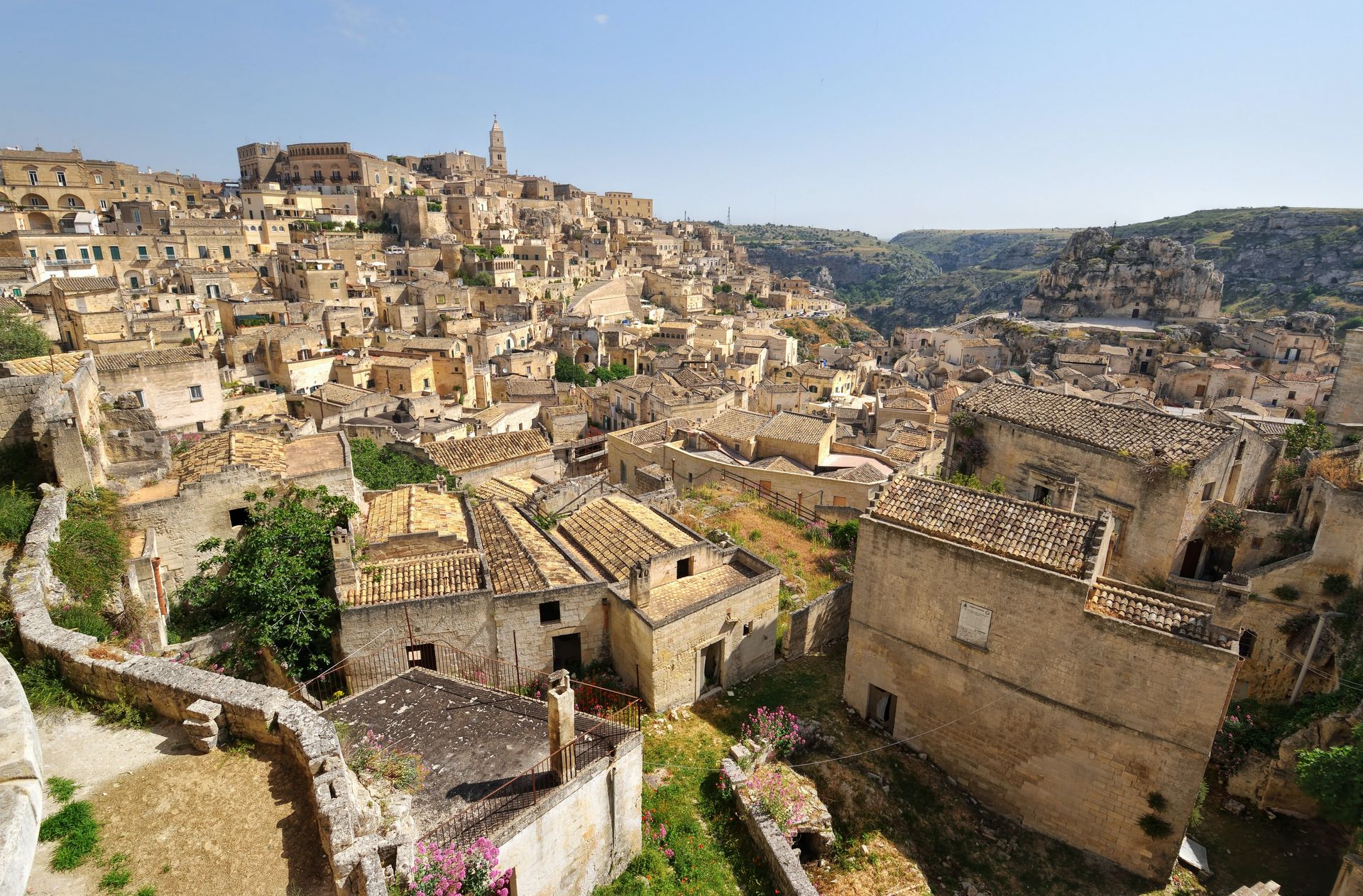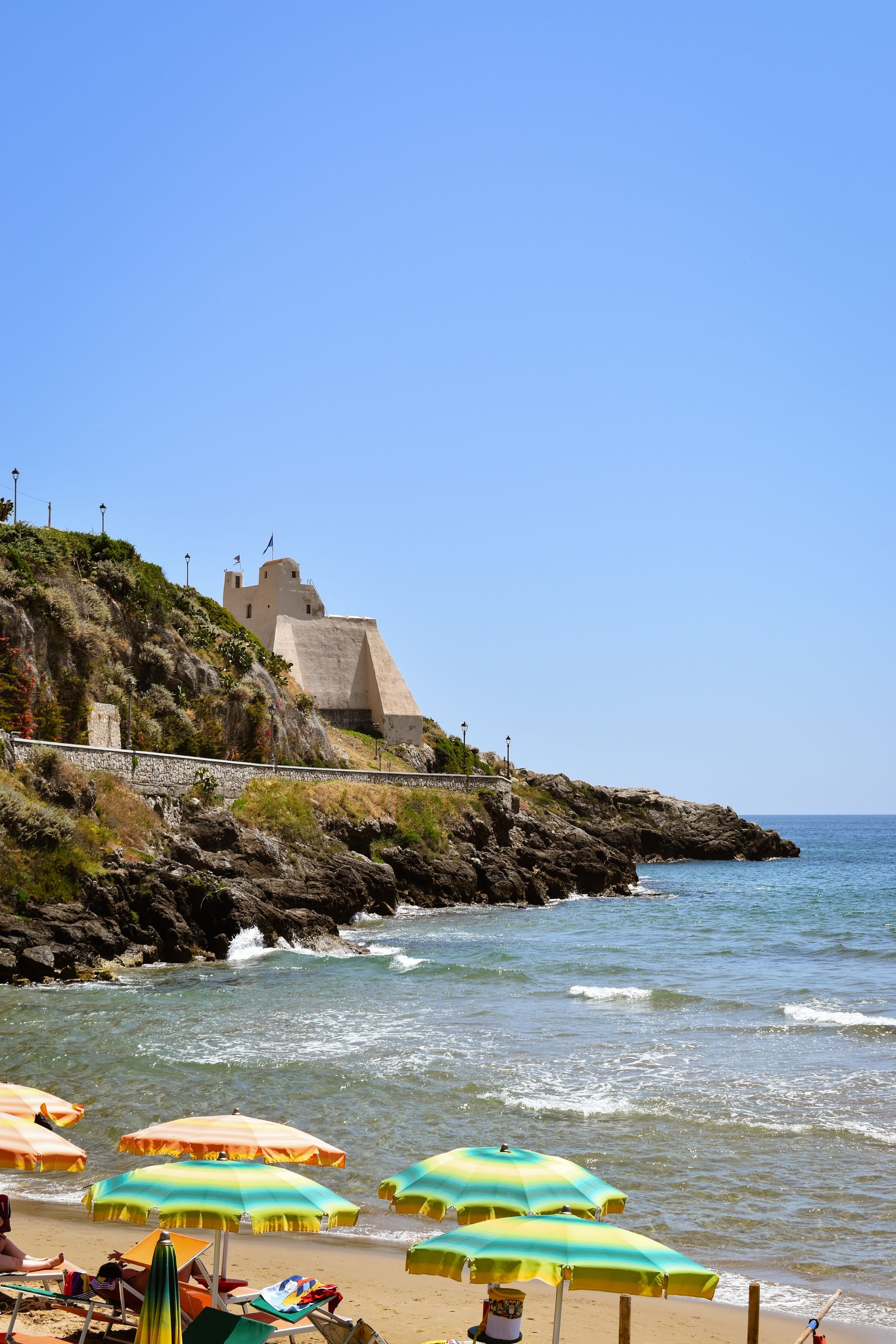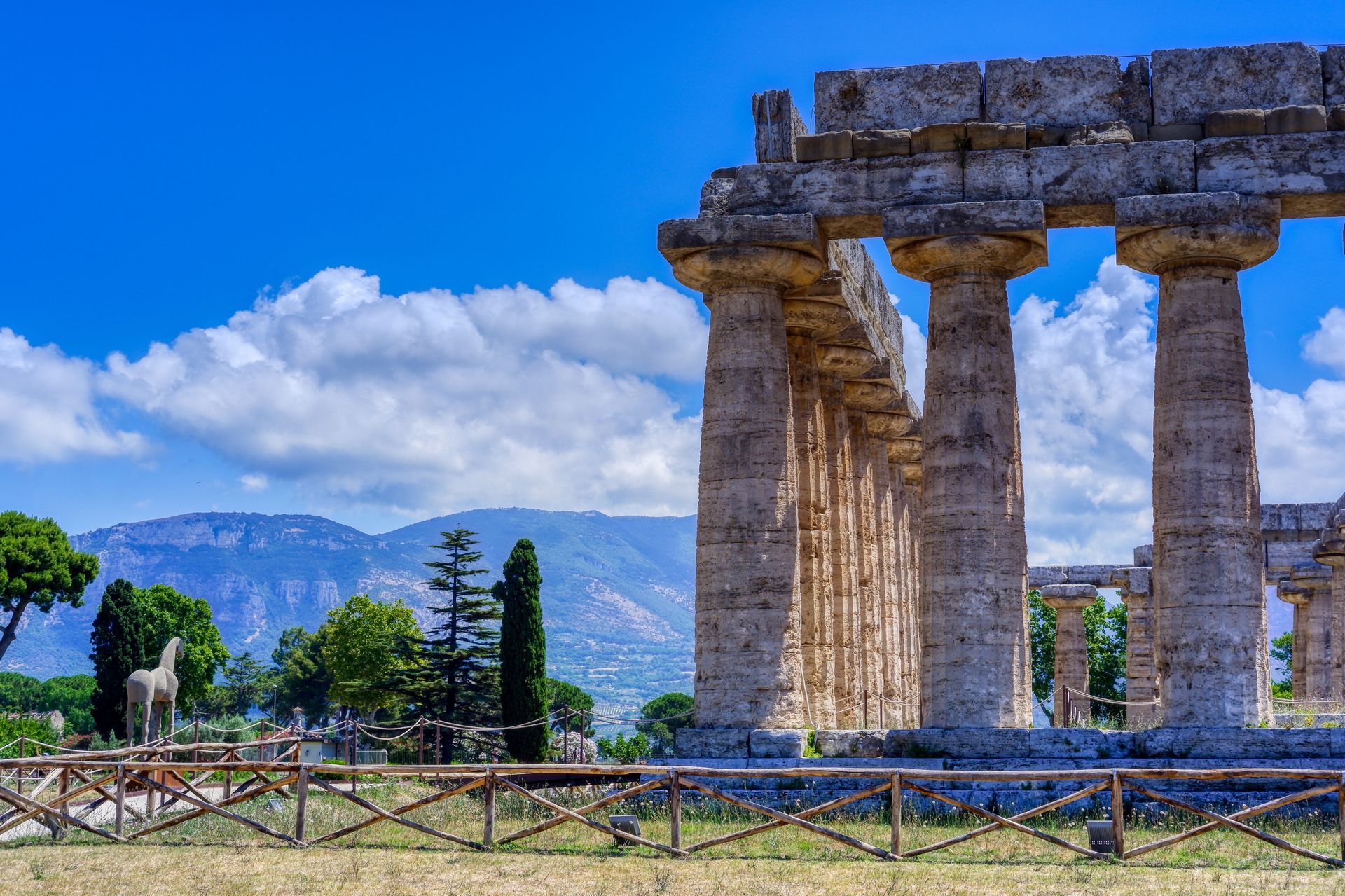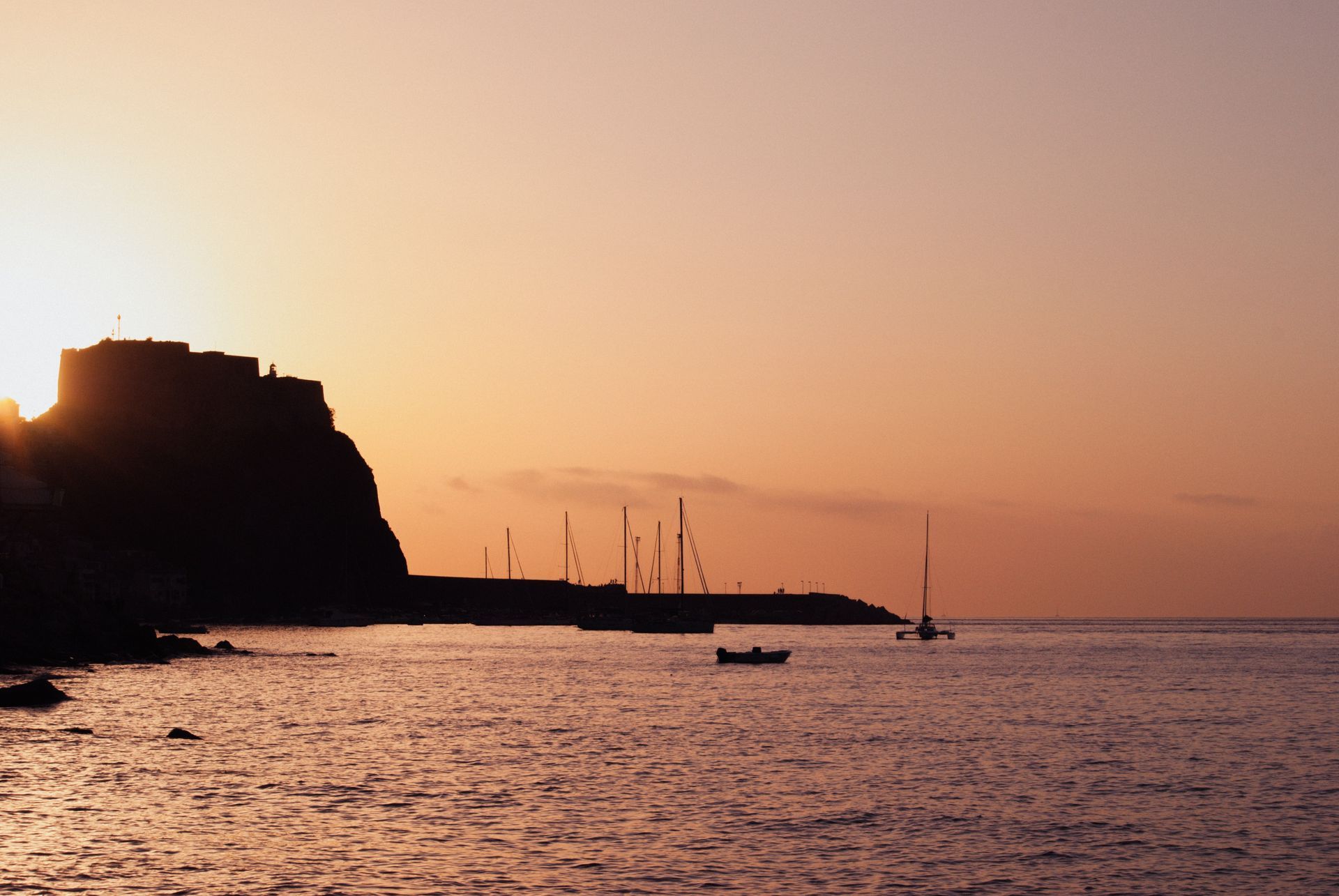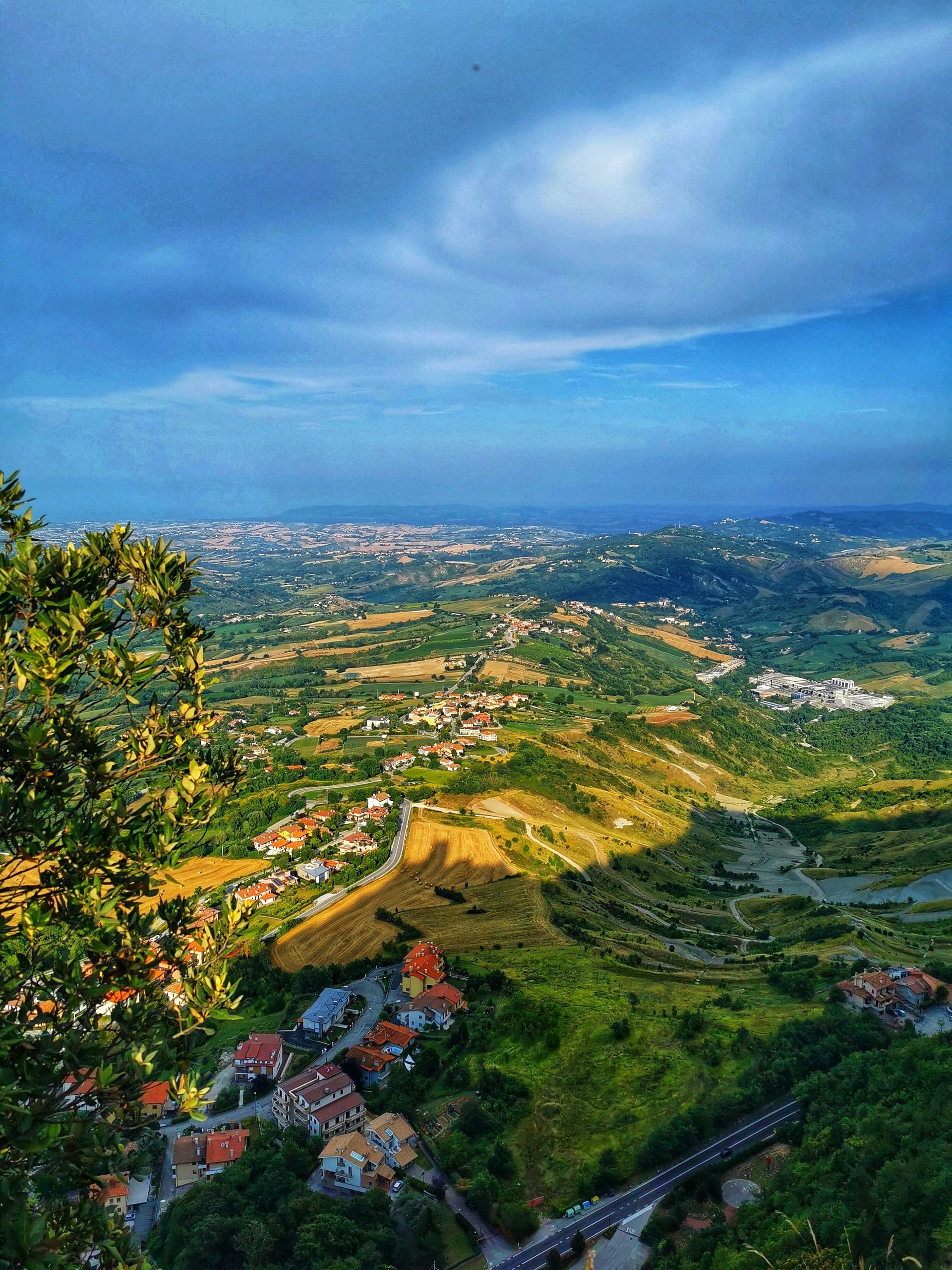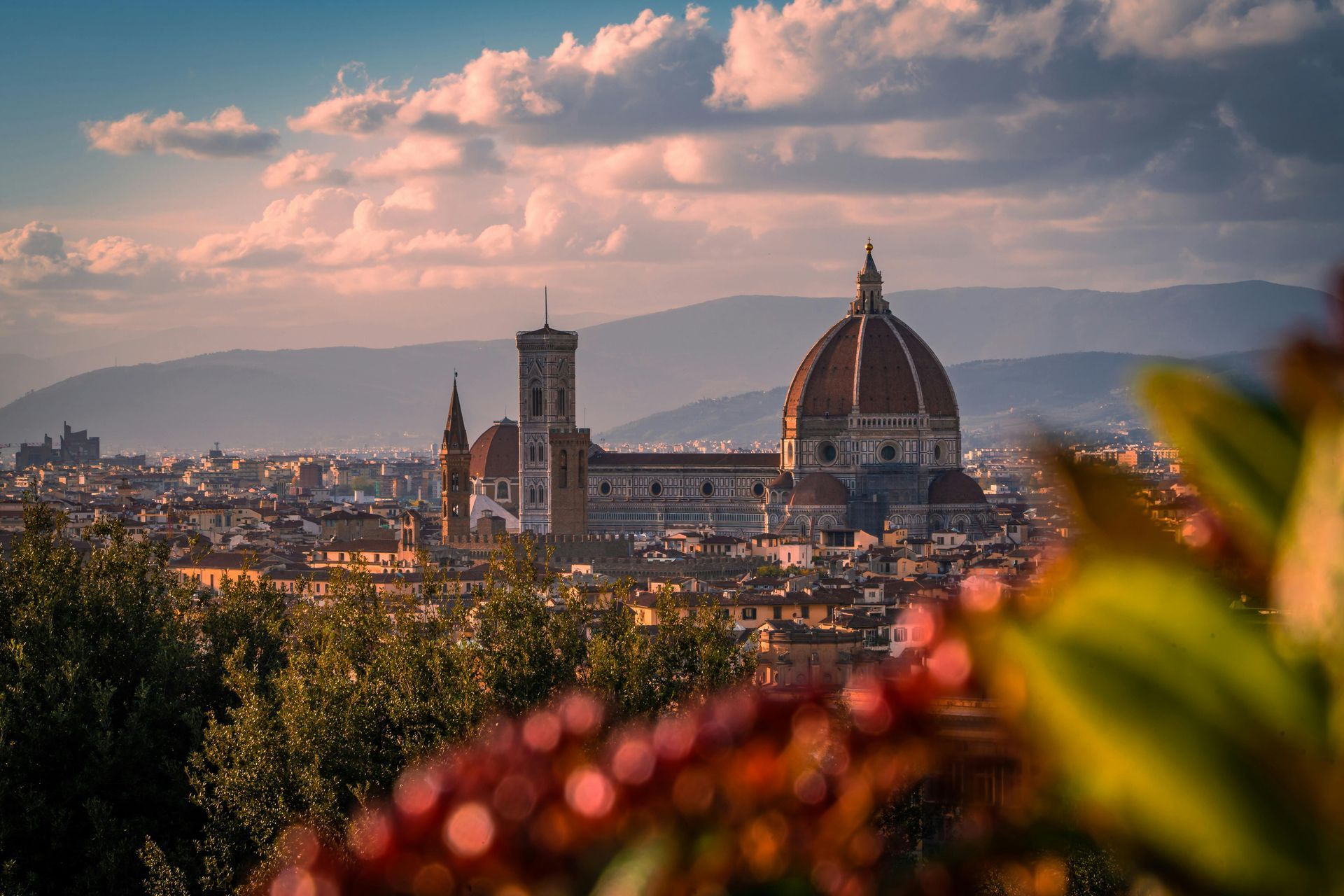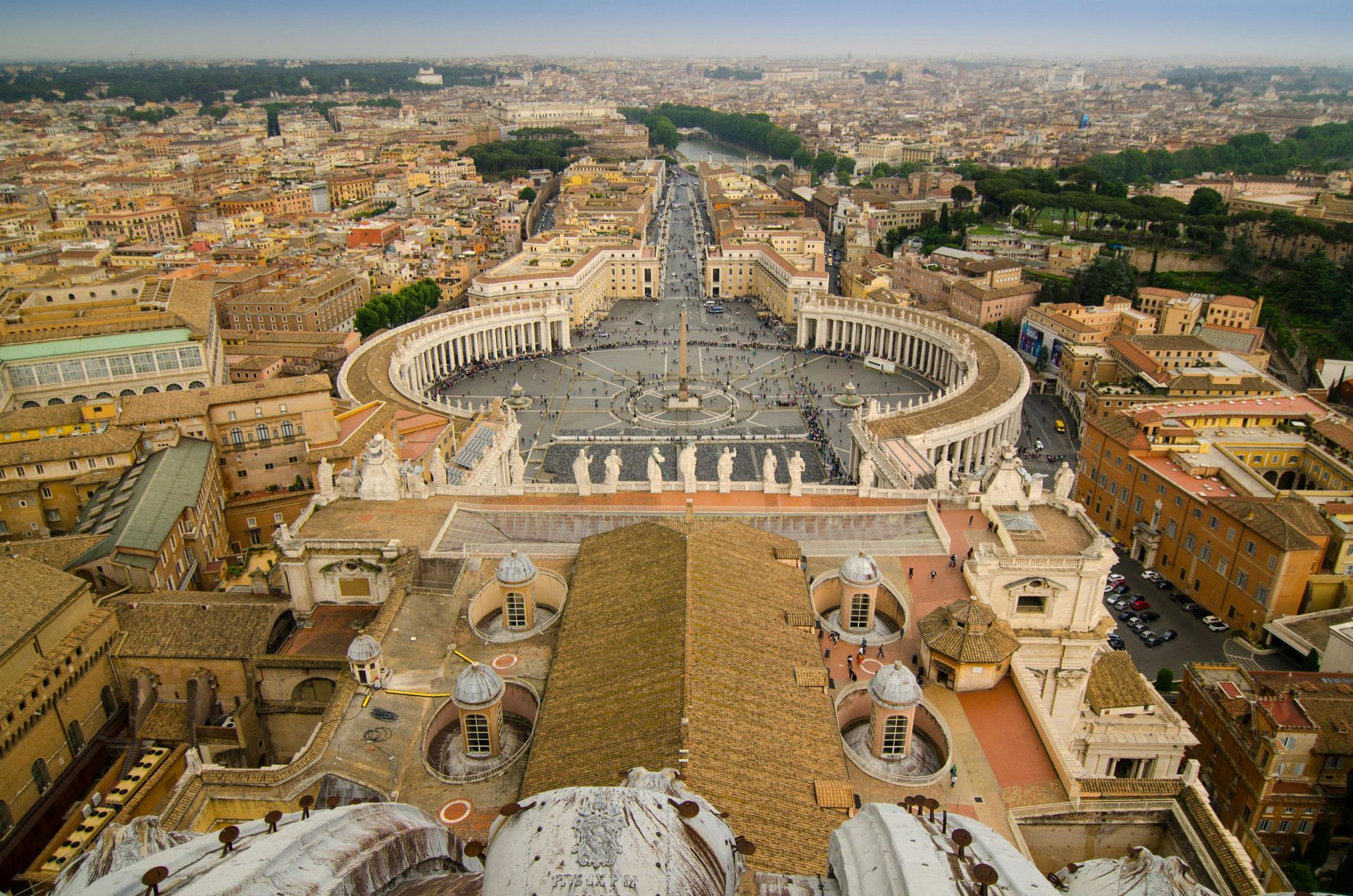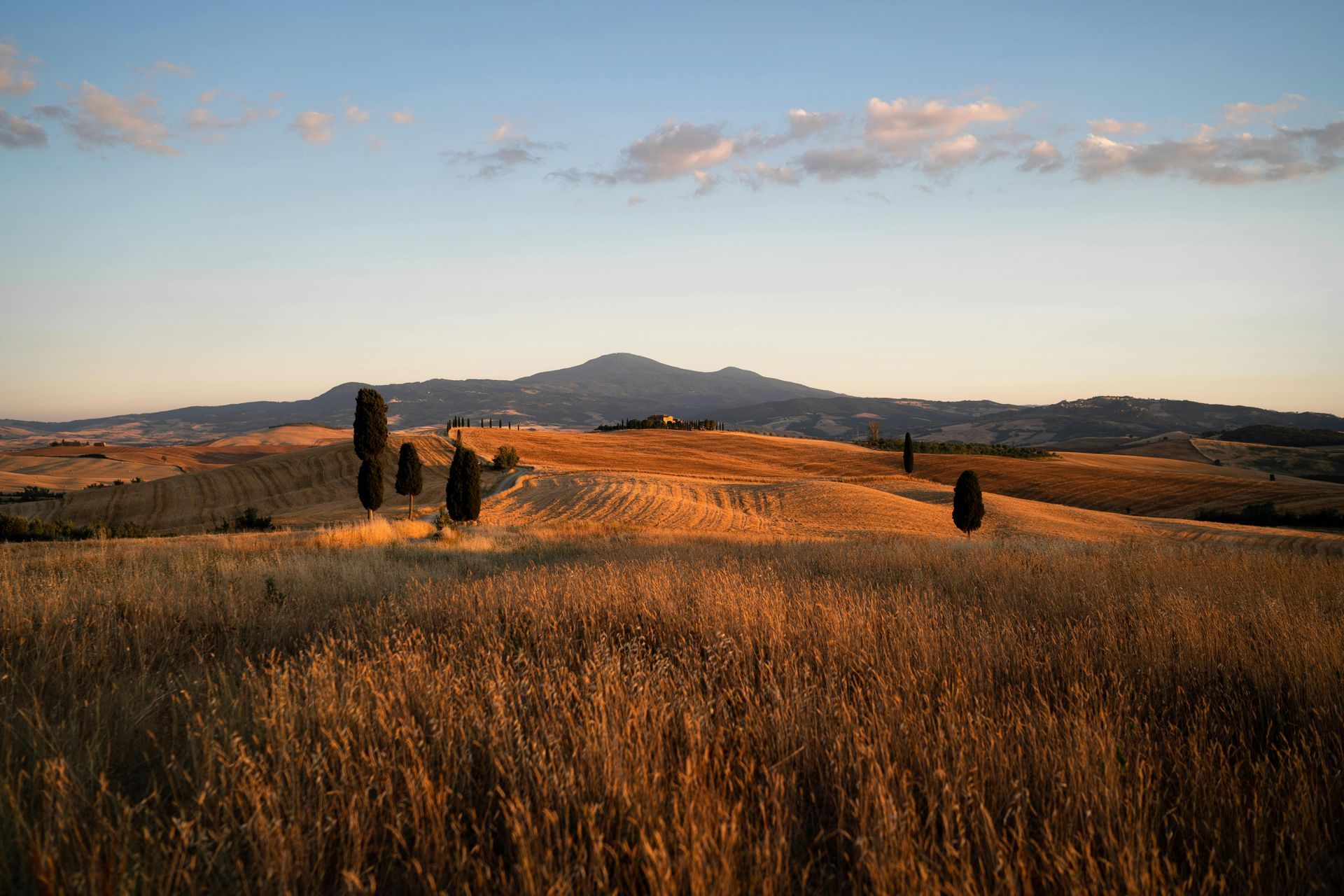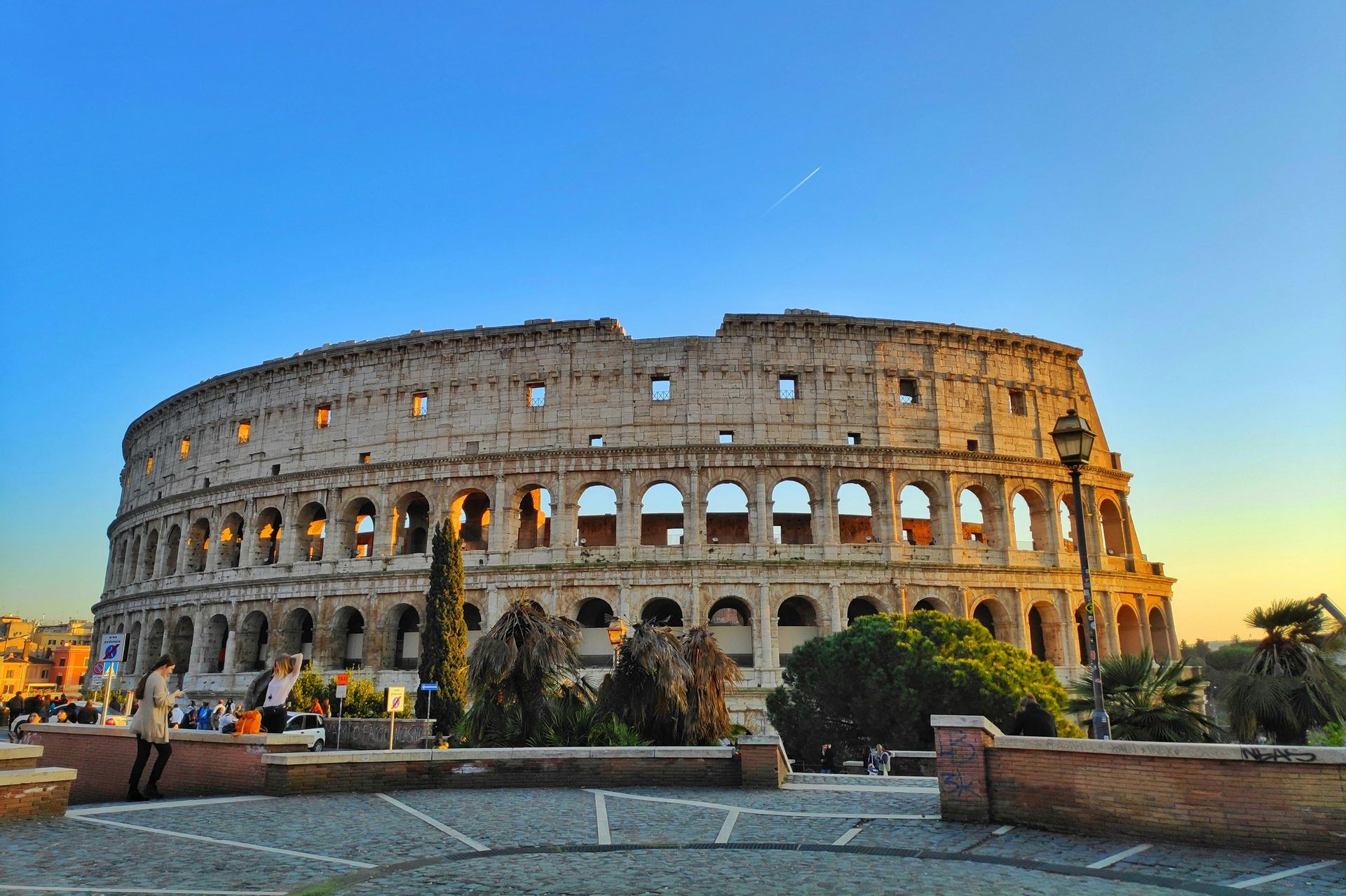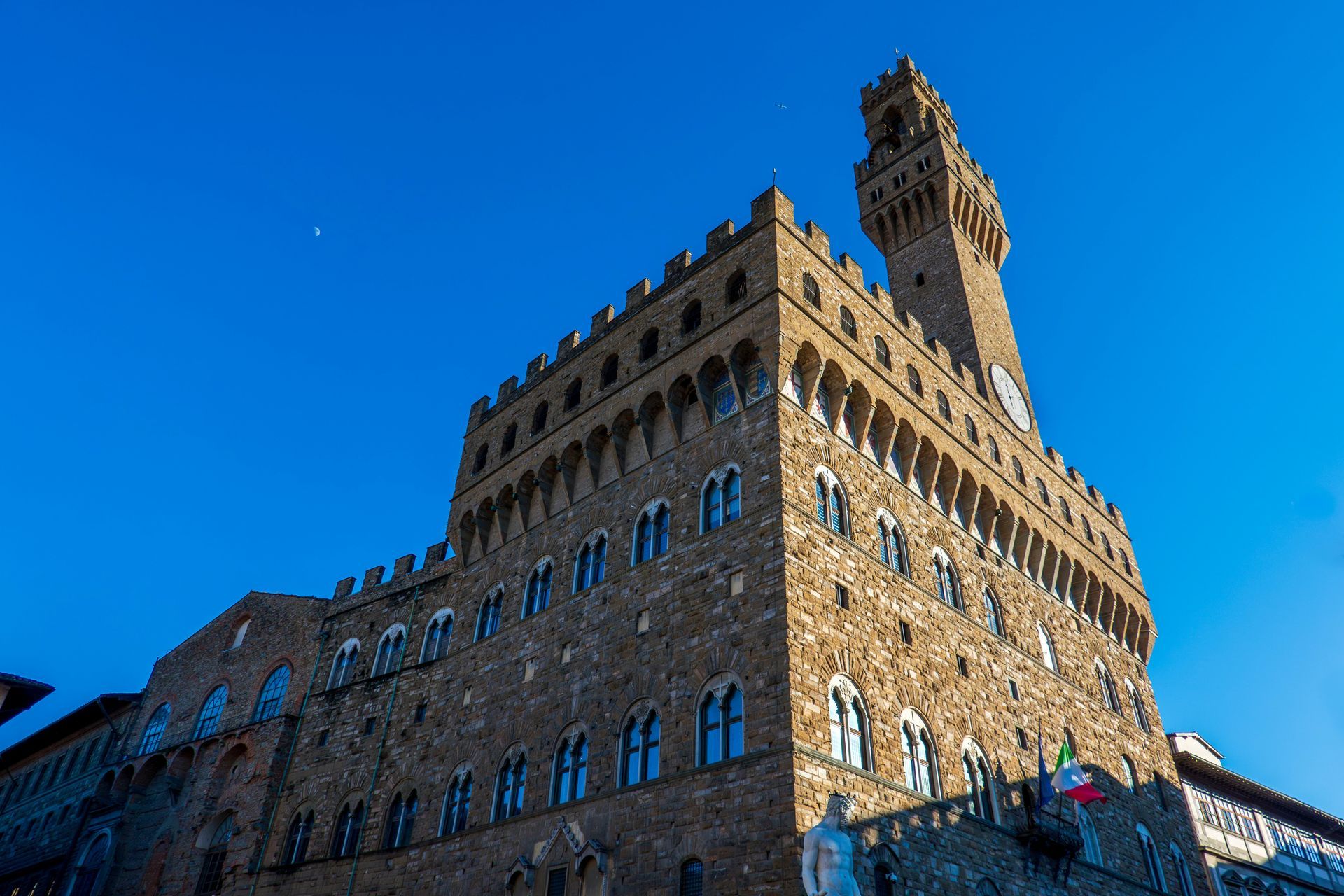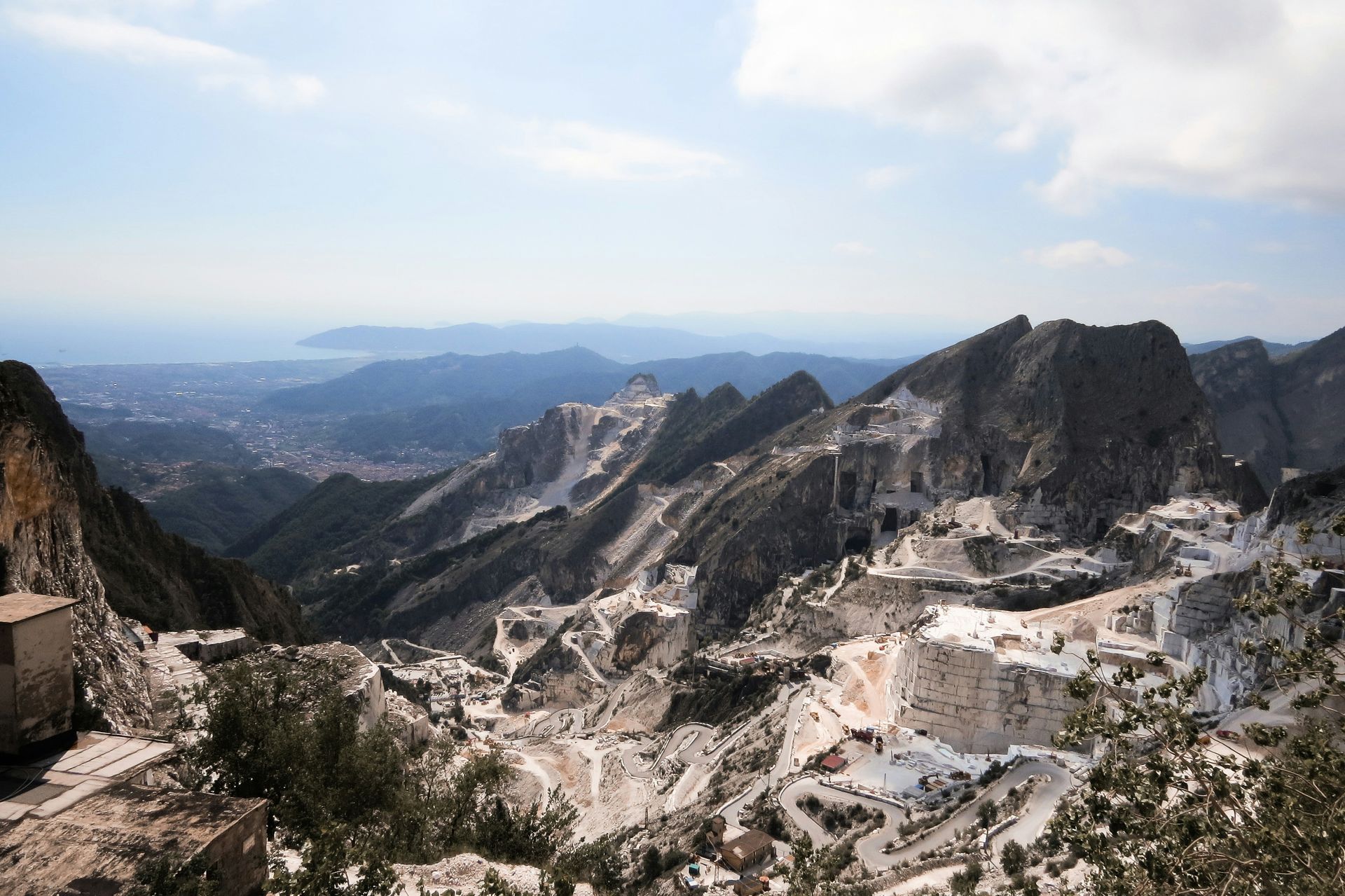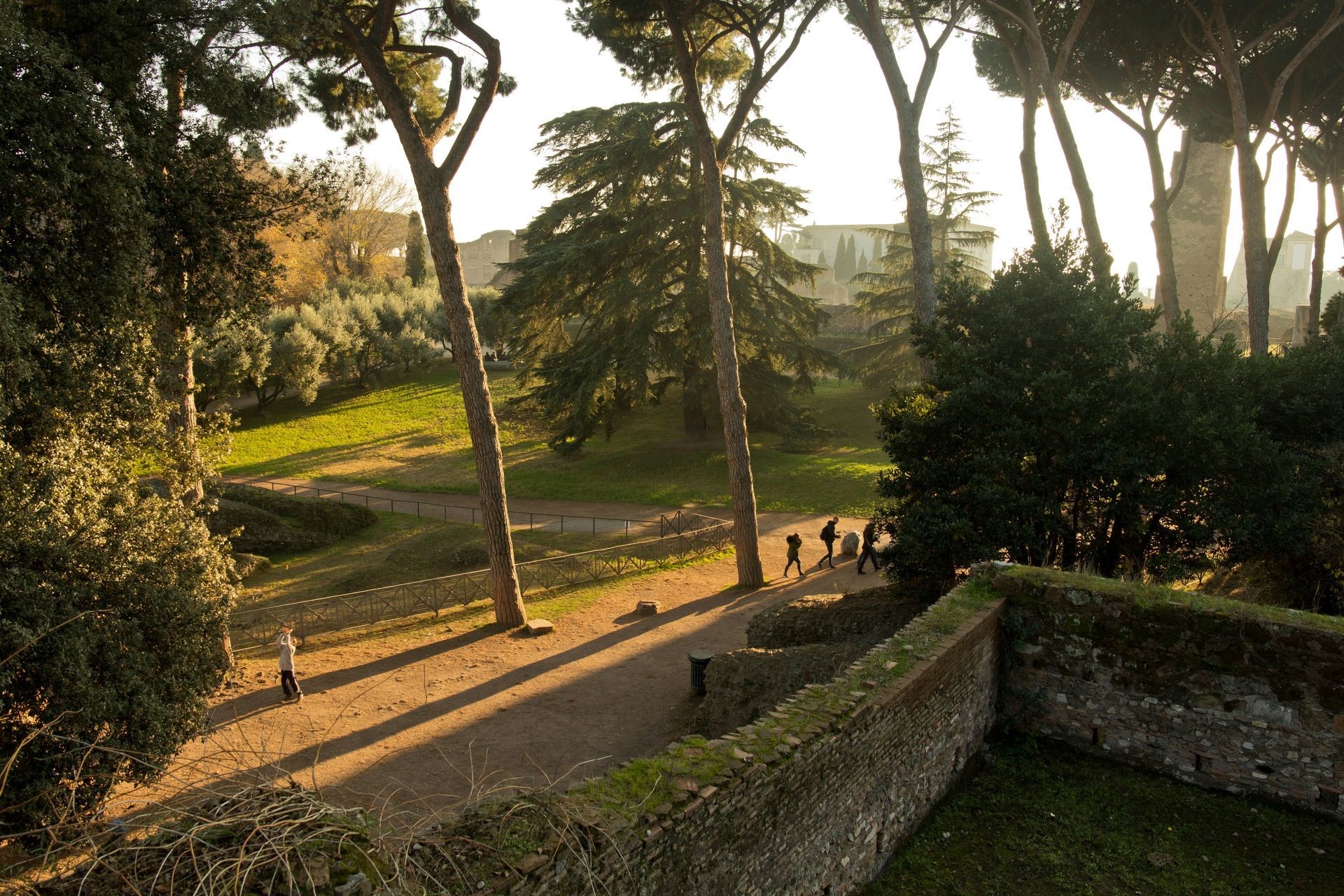Spreading Smile across the globe
Hidden Gems of Northern Italy
Hidden Gems of Italy are a testament to the country's diverse and enchanting beauty, often concealed from the traditional tourist routes. While Italy is celebrated for its iconic cities like Rome, Florence, Venice, and the Amalfi and Cinque Terre coasts, it's the lesser-known destinations that promise a unique journey. These unexplored regions offer travellers a chance to experience Italy's authentic culinary delights, rich historical narratives, and stunning natural landscapes. From the northern reaches to the southern shores, these Hidden Gems of Italy reveal a different facet of this remarkable nation.
Lake Orta - Piedmont
Hidden Gems of Italy come to life at Lake Orta, tucked away near the Swiss border in the heart of Piedmont. This hidden paradise often evades the spotlight compared to its more famous counterparts like Lake Como and Lake Garda. The historic town of Orta San Giulio, with its Baroque and Medieval architecture, cobbled streets, and idyllic Piazza Motta, enchants visitors. The glistening waters of the lake itself invite moments of serenity. What makes Lake Orta truly extraordinary is the mysterious island at its centre—a tranquil sanctuary inhabited by resident nuns.
Treviso - Veneto
Among the Hidden Gems of Italy, Treviso stands as a city in the Veneto region that retains its genuine northern Italian charm. Meandering through its narrow cobbled lanes, picturesque canals, and medieval city walls feels like a step back. Positioned on the fringes of the renowned Prosecco wine region, Treviso provides a delightful excuse for an aperitivo with a glass of Italy's renowned sparkling Prosecco.
Aosta Valley
Nestled among the bordering landscapes of Switzerland and France, the Aosta Valley showcases breathtaking alpine scenery, perched castles, and traditions that thrive throughout the year. When spring and summer arrive, the region's walking trails entice explorers. This season also brings lively festivals that celebrate folk traditions that date back to medieval times. Be sure to savour the local cheese Fontina, a culinary delight that embodies the spirit of this Hidden Gem of Italy.
Alba - Piedmont
Alba, a sought-after destination among Italy's hidden gems, is situated in the vineyards of the Langhe Hills. Once adorned with a hundred towers, Alba exudes a charming rural ambience. It's renowned for its autumn truffle festival, a gastronomic event that captures the essence of the region. Alba is also celebrated for its dark chocolate, hazelnut groves, white truffles, and prestigious wineries. It's from this very region that the sought-after Barolo wine originates.
Camogli - Liguria
Camogli, a typical and vibrant Italian seaside village on the Ligurian Riviera di Levante, perfectly embodies the spirit of the Hidden Gems of Italy. Towering, brightly painted houses dominate the town, and it has become a magnet for visitors seeking pristine beaches, Ligurian cuisine, the rustic fishing marina, Italian culture, and a tranquil natural setting. Camogli has earned its reputation for culinary excellence, focusing on fish and seafood, particularly anchovies and tuna, as well as the iconic pesto sauce made from basil and pine nuts.
Brescia - Lombardy
Hidden Gems of Italy often come alive through history, and Brescia is no exception. In this small city, history unfolds through a tapestry of architectural styles, spanning Roman, Medieval, Renaissance, Baroque, and even Art Deco. Walking through Brescia feels like a journey through time, and a visit to the captivating Piazza della Loggia, framed by a stunning Venetian-style palace at its heart, is a must for history enthusiasts.
Trieste
Trieste is a refreshingly unique destination, an Italian city positioned near the Slovenian border with its dialect that's a delightful blend of Austrian-German, Greek, Croatian, and Italian. Trieste's neoclassical waterfront is a sight to behold, with its marina brimming with stylish, glimmering yachts. The city's offerings include clear blue skies, expansive sandy beaches, city lidos, and the surrounding vineyards. Trieste is a Hidden Gem of Italy that belongs on every traveller's Northern Italian itinerary.
Modena - Emilia-Romagna
Modena is famed for its Hidden Gems of Italy, including balsamic vinegar, Luciano Pavarotti, the Romanesque cathedral, and the nearby Ferrari museum. Beyond these illustrious attractions, Modena reveals a treasure trove of remarkable restaurants. Massimo Bottura's Osteria Francescana has twice earned a place among the world's top 50 eateries, showcasing the culinary excellence of this Hidden Gem. While in Modena, don't miss the chance to savour local specialities like stuffed tortellini and sparkling Lambrusco wine, the perfect complement to your gastronomic journey.
Chiusa / Klausen - South Tyrol
Chiusa, also known as Klausen, is one of Italy's most picturesque villages. It is situated on the banks of the Isarco River in the South Tyrolean region near the Austrian border. Chestnut groves, green fields, vineyards, and farmsteads surround the town. In the village itself, visitors are captivated by narrow alleyways, coats of arms, large bay windows, crenellated facades, and the two main squares.
Ravenna - Emilia-Romagna
Ravenna offers a treasure trove of experiences among the Hidden Gems of Italy. This city is a feast for the senses, with its diverse offerings of food, music, art, culture, history, beaches, wine, and mosaics. Ravenna is home to eight UNESCO-listed sites, making it a must-visit for history and art enthusiasts. It's also known for its two-month-long music festival, Dante Alighieri's tomb, local culinary delights, nearby beach resorts, and the opportunity to explore pinewood forests. The city's fame is derived from its stunning mosaics, dating from the fifth and sixth centuries, scattered throughout the town.
In conclusion, Italy's Hidden Gems invite you to embark on a journey less travelled, where the rich tapestry of history, diverse cuisine, and breathtaking landscapes come to life. These lesser-known destinations provide an authentic Italian experience, away from the bustling crowds, revealing the nation's soul in its purest form. Explore these Hidden Gems to uncover Italy's hidden treasures.
Hidden Gems of Central Italy
Hidden Gems of Italy beckon the adventurous traveller to explore the lesser-known treasures that this remarkable country holds. From the picturesque valleys of Tuscany to the medieval charm of Umbria, the mysterious landscapes of Molise, and the architectural wonders of San Gimignano, these destinations promise unforgettable experiences.
Garfagnana - Tuscany
The Garfagnana region is a hidden gem in the beautiful Tuscan valley north of Lucca. It is crossed by the Serchio River, and the landscape is characterized by fertile greenery, rugged mountains, and charming villages. Outdoor activities such as hiking, walking, and mountain biking are enjoyed by many people in this area. Garfagnana is home to several one-of-a-kind attractions, including a ghost town, a wind cave, and the Devil's Bridge at Borgo a Mozzano.
Gubbio - Umbria
Umbria hides many treasures, and a particular favourite among Hidden Gems of Italy is the Medieval hilltop town of Gubbio. Gubbio, a city with a history dating back over 2,000 years, is a maze of cobbled streets and stone buildings that have been perfectly preserved. Visitors can take a cable car to the summit of Mount Ingino to enjoy panoramic views of the surrounding area. In addition, Gubbio hosts Italy's oldest event, the Corsa dei Ceri, in which teams race through the streets carrying massive wooden candles.
Molise
Molise is Italy's second-smallest region and one of its best-kept secrets. Hidden Gems of Italy are plentiful here. The picturesque town of Agnone is renowned for its artisanal bells, produced by the oldest family-run bell foundry in the world. Meanwhile, Campobasso, the regional capital, boasts a stunning medieval old town. Molise offers a captivating mix of historical charm and natural beauty, with rugged mountains, rolling hills, and pristine beaches along the Adriatic coast.
San Gimignano - Tuscany
Nestled in the heart of Tuscany, San Gimignano boasts medieval architecture and, of course, its famous towers. The town's historic centre is a UNESCO World Heritage site, known for its fourteen stone towers that once symbolised wealth and power. San Gimignano offers a glimpse into medieval Tuscany, with well-preserved streets and squares that transport visitors to another time. Besides the towers, make sure to explore the Collegiate Church and indulge in the local Vernaccia wine, a crisp white wine produced in the region.
Spello - Umbria
Another gem in the heart of Italy, Spello enchants visitors with its winding medieval streets and stunning floral displays. Known as the "Città Infiorata" or "flower town," Spello hosts the Infiorata festival, during which the streets are carpeted with intricate flower petal designs. This event occurs in early June and is a magnificent spectacle. Outside of the festival, Spello's charm continues with its well-preserved historic centre and beautiful churches.
Trulli of Alberobello - Apulia
Apulia, or Puglia, is famous for its unique trulli houses, and Alberobello is the epicentre of this architectural marvel. These whitewashed conical homes are a UNESCO World Heritage Site that offers a glimpse into the region's history. Visitors can even stay in trulli that have been converted into accommodations, providing a truly immersive experience.
Norcia - Umbria
Nestled in the Sibillini Mountains, Norcia is renowned for its gastronomy. This charming town produces exceptional cured meats, particularly prosciutto and salami. For food enthusiasts, Norcia is a true Hidden Gem of Italy. Explore local shops, taste the region's specialities, and visit the beautiful town square. Nature enthusiasts will also find hiking trails and natural beauty in the nearby Monti Sibillini National Park.
Montefalco - Umbria
Montefalco is often called the "Balcony of Umbria" for its stunning views over the surrounding valley. This charming town is also known for its wine, particularly Sagrantino, one of Italy's most robust red wines. Montefalco's medieval centre is picturesque and hosts several churches with remarkable frescoes, making it a cultural and gastronomic gem.
Castelluccio di Norcia - Umbria
High in the Sibillini Mountains, Castelluccio di Norcia is a quaint village known for its stunning wildflower blooms in late spring and early summer. The surrounding plateau becomes a colourful tapestry, attracting photographers and nature enthusiasts. Besides the flowers, visitors can enjoy hiking and take in the breathtaking scenery. Hidden Gems of Italy like Castelluccio di Norcia provide a unique connection to nature and the changing seasons.
In the heart of Italy, a treasury of Hidden Gems awaits the intrepid traveller. From the mysterious ghost town of Garfagnana to the ancient charms of Gubbio, the enchanting landscapes of Molise, and the medieval splendours of San Gimignano, these lesser-known destinations reveal Italy's diverse beauty and rich history. Journey through the tranquil streets of Spello, marvel at the unique trulli houses in Alberobello, savour the culinary delights of Norcia, and bask in the vibrant blooms of Castelluccio di Norcia. These Hidden Gems of Italy promise an unforgettable adventure in a land of timeless wonder.
Hidden Gems of Southern Italy
Italy, a land of rich history, captivating art, and exquisite cuisine, is known for its iconic cities and world-famous landmarks. Despite the tourist-filled streets and crowded piazzas, the country holds many hidden gems—lesser-known destinations that offer a more intimate and authentic experience. These places, tucked away in various corners of Italy, are a testament to the nation's diverse and enchanting beauty, waiting to be explored by the discerning traveller. From medieval towns perched atop hills to charming coastal villages and ancient archaeological sites, the Hidden Gems of Italy promise unique adventures and unforgettable memories.
Civita di Bagnoregio - Lazio
Civita di Bagnoregio is often called the "Dying Town" because of its gradual erosion over the centuries. This medieval village is perched on a hilltop and can only be reached by a long footbridge. It's a unique destination, seemingly suspended in time, and is the perfect Hidden Gem for history buffs and photographers.
Matera - Basilicata
Matera, known for its cave dwellings, is one of Italy's most intriguing and unique destinations. The Sassi di Matera, a historic cave settlement, is a UNESCO World Heritage Site. Matera is gaining popularity but still qualifies as one of the Hidden Gems of Italy. Touring this labyrinth of stone-carved rooms and narrow streets offers an incredible historical journey.
Sperlonga - Lazio
Sperlonga is a charming coastal town characterized by its pristine beaches, winding alleys, and picturesque piazzas. Nestled between Rome and Naples, Sperlonga is often overlooked by travellers. A visit here reveals a relaxed and authentic Italian atmosphere, perfect for strolls and seaside relaxation. Take advantage of the Grotto of Tiberius, a cave once used as the emperor's villa and now a museum.
Paestum - Campania
The ancient ruins of Paestum, originally a Greek colony known as Poseidonia, provide an extraordinary window into Italy's history. The temples are exceptionally well-preserved, ranking among the best-preserved in the world. Paestum is also home to a fascinating archaeological museum that displays artefacts from the site. Enjoy a step back in time amid the Hidden Gems of Italy.
Castro - Apulia
Castro, a picturesque coastal town, boasts a historic centre perched on a rocky outcrop. Visitors can explore ancient churches, fortifications, and a charming harbour. Castro also has sea caves that can be explored by boat. The region's cuisine is a seafood lover's paradise, making this town a Hidden Gem for food enthusiasts as well.
Scilla - Calabria
Scilla, an idyllic coastal village in Calabria, offers stunning sea views and hidden beaches. The town is known for the Ruffo Castle, which dominates the landscape, and the legendary sea monster Scylla from Greek mythology. The charming village is a serene and lesser-known alternative to some of the more crowded Italian seaside destinations.
San Marino
San Marino is a microstate surrounded by Italy and is one of the world's oldest republics. It's a destination that's often missed, making it a true Hidden Gem. San Marino boasts dramatic mountaintop views, historic architecture, and unique attractions like the Guaita Tower and the Palazzo Pubblico. For collectors, the country is also known for its beautiful stamps and coins.
Conclusion
Discovering the Allure of Hidden Gems of Italy
Hidden Gems of Italy offers travellers an authentic experience, far removed from the tourist-packed cities and famous landmarks. These lesser-known destinations unravel the genuine charm, culture, history, and culinary wonders that make Italy an endlessly fascinating country to explore. From the mountains of the North to the coasts of the South, each region holds its treasures, waiting to be discovered by those who venture off the beaten path. By exploring the Hidden Gems of Italy, you can craft a unique and unforgettable journey that deepens your appreciation of this incredible country. Plan your trip carefully, and you will be rewarded with the beauty, history, and flavours that characterize these enchanting places.
Where did Michelangelo live
In unwinding the historical tapestry that enshrouds the life of Michelangelo, we embark on a captivating exploration into the spaces that cradled his artistic brilliance. Beyond the strokes of his famed brush and the chisel's delicate dance, the question of "Where did Michelangelo live" unveils a narrative beyond the confines of mere geography – it unravels the intimate connection between the artist and his surroundings.
Michelangelo, a luminary of the Italian Renaissance, navigated a landscape marked by architectural marvels and cultural ferment. His dwellings, each brick and stone imbued with the echoes of creativity, provide glimpses into the environments that nurtured his genius. From the bustling streets of Florence, where the spirit of artistic revolution thrived, to the sacred halls of the Vatican City, where he left an indelible mark on the Sistine Chapel, Michelangelo's abodes are more than physical addresses. They are chapters in the odyssey of a master craftsman, revealing the symbiotic relationship between his living spaces and the timeless creations that emerged from them.
So, join me as we traverse the cobblestone paths and lofty halls where Michelangelo breathed life into his masterpieces, seeking not only the locations on maps but the soulful essence of the spaces that bore witness to the artistic alchemy of a legend.
Florence: The Cradle of Renaissance
In the heart of Florence, where the cobbled streets wind through a tapestry of history, Michelangelo took his first breath in the year 1475, amidst an air pregnant with the promise of artistic fervor. This city, a pulsating hub of intellectual and cultural revolution during the Renaissance, became more than a mere backdrop to Michelangelo's early life; it was the very crucible in which his prodigious genius found its voice. From the quaint sanctuary of his family home, nestled near the imposing Basilica di San Lorenzo, to the labyrinthine workshops that lined the serene banks of the Arno River, Florence unraveled its streets like chapters in the unfolding saga of Michelangelo's artistic awakening.
The architecture of Florence, adorned with the echoes of centuries, wove itself into the fabric of Michelangelo's consciousness. Every arch, every spire, and every cobblestone seemed to whisper tales of creative pioneers who had walked these same streets before him. The city's monuments, bathed in the golden glow of history, undoubtedly imprinted their majestic contours onto the malleable canvas of the budding artist's imagination. In this cradle of the Renaissance, Florence wasn't merely a stage; it was an active participant, an animate force that guided and shaped the early strokes of Michelangelo's destined masterpiece.
The Sacred Halls of Vatican City
As Michelangelo's renown ascended to celestial heights, his artistic journey transcended the boundaries of Florence, guiding him toward the sanctified precincts of Vatican City. Here, amidst the grandeur of St. Peter's Basilica and the venerable halls of the Sistine Chapel, Michelangelo's transformative touch would etch an everlasting mark. Vatican City, a convergence of spiritual sanctity and artistic brilliance, metamorphosed into a haven, a second home where the maestro's creative spirit soared.
Within the sacred embrace of Vatican City, Michelangelo's genius flourished, resonating through the resplendent corridors that bore witness to some of his most iconic masterpieces. The Sistine Chapel, a celestial canvas of divine inspiration, became the stage upon which Michelangelo choreographed a symphony of color and form. The frescoes adorning its ceiling, meticulously painted over four arduous years, stand not merely as artistic triumphs but as profound testaments to the symbiotic relationship between Michelangelo and the sacred confines of Vatican City. In each stroke, in every celestial figure that graces the chapel's ceiling, one perceives the whispers of a maestro harmonizing with the divine, transcending the earthly realm and elevating the very soul of Vatican City to unprecedented artistic heights.
Tuscany Retreats: Sanctuary for Creativity
Amidst the ceaseless cadence of courtly life, Michelangelo yearned for a sanctuary where creativity could unfurl its wings, and he discovered such refuge in the serene embrace of Tuscany. In this pastoral haven, where the hills ripple like waves and the rustic charm of villages like Settignano and Castello di Poggio a Caiano beckon, Michelangelo found a retreat that transcended the mere physical boundaries. Tuscany, with its undulating landscapes and sun-kissed vineyards, became a canvas onto which the artist could project the kaleidoscope of his imagination.
In these idyllic settings, away from the ostentation of courts and the humdrum of urban life, Michelangelo immersed himself in the quietude of nature. The gentle rustle of olive groves and the symphony of chirping crickets became the backdrop to his contemplations. Amidst the whispering leaves and the fragrance of Tuscan blooms, Michelangelo found not only solace but a profound communion with the muse that resided in the very essence of Tuscany.
It was in these tranquil retreats that Michelangelo's artistic visions burgeoned, nurtured by the tranquility that only the Tuscan countryside could offer. As he walked the rolling hills and gazed upon the timeless landscapes, Tuscany became not just a geographical retreat but an integral part of Michelangelo's creative process – a silent collaborator in the symphony of his artistic expressions.
Rome: The Culmination of a Storied Journey
In the twilight of Michelangelo's illustrious career, Rome emerged as the epicenter of his artistic cosmos, a city that pulsed with the very heartbeat of cultural and creative expression. Here, amidst the cobblestone streets and the majestic ruins of ancient empires, Michelangelo found a home, each Roman breath infusing new life into the storied chapters of his unparalleled journey. His residence, nestled in the shadows of the venerable Basilica di Santa Maria Maggiore, became a hallowed space where the maestro wove the final threads of his artistic legacy.
Within the confines of Rome's historical tapestry, Michelangelo's hands sculpted the ethereal form of the Moses, a testament to his transcendent skill and the culmination of a lifetime devoted to the mastery of stone. The air around his workshop, tinged with the fragrance of marble dust and the resonance of chisels meeting stone, bore witness to the creation of the tomb of Pope Julius II, an opulent homage to the ecclesiastical patron who had propelled Michelangelo into the annals of artistic immortality.
Rome, with its grandeur and historical richness, provided a fitting canvas for Michelangelo's final act. The city's architectural opulence, from the towering Colosseum to the majestic Pantheon, mirrored the grandiosity of Michelangelo's artistic vision. In every sculpted masterpiece, in every stroke of his brush, Rome became not merely a backdrop but an active participant in the culmination of Michelangelo's storied journey—a city that cradled the echoes of a maestro's final artistic crescendo.
The Medici Court: A Nexus of Art and Patronage
In the intricate dance of Michelangelo's life within Florence, his footsteps wove a mesmerizing pattern through the corridors of power, finding a harmonious rhythm in the embrace of the Medici Court. As he meandered through the city's vibrant streets, each cobblestone seemed to echo with the whispers of artistic destiny, leading him into the hallowed presence of the Medici family. In the Medici Court, a nexus of art and patronage, Michelangelo discovered not just benefactors but kindred spirits who discerned the unparalleled brilliance within his burgeoning talent.
The opulent Medici palaces, notably the resplendent Palazzo Vecchio and the stately Palazzo Medici Riccardi, emerged as more than architectural marvels; they transformed into sanctuaries where Michelangelo's artistic musings unfolded like petals in a grand tapestry. Occasionally graced by his presence, these regal abodes became dynamic spaces where the convergence of artistic visionaries was not just encouraged but celebrated. Within their ornate halls and opulent chambers, the Medici Court became a crucible, a vibrant cauldron of creativity where the sparks of innovation were nurtured and fanned into the flames of artistic brilliance. Michelangelo, in the company of the Medici, found not only patrons but pillars of support who recognized the transformative power of his craft and endeavored to cultivate an environment where creativity could not only bloom but flourish in the fullness of its potential.
Sanctuary in Carrara: The Marble Quarries' Embrace
Within the depths of Michelangelo's artistic odyssey, a chapter unfolds that reveals an intimate connection to the very essence of his sculptural legacy—Carrara, a haven celebrated for its pristine marble quarries. Here, amidst the undulating landscapes and the cool embrace of Carrara's renowned quarries, Michelangelo's fascination with marble transcended mere artistic curiosity; it evolved into a profound communion with the very material that would shape his immortal creations.
The magnetic allure of Carrara's marble, with its luminous purity and timeless allure, acted as an irresistible force that drew Michelangelo to its hallowed grounds. Here, in the heart of the quarries, he became more than a sculptor; he transformed into a marble whisperer, selecting each block with a discerning eye and an artist's intuition. The quarries, echoing with the resonance of Michelangelo's chisel, witnessed the birth of sculptures that would stand as timeless testaments to his mastery.
Carrara, far more than a geographical location, became an extension of Michelangelo's artistic sanctuary. The marriage between artist and medium, as manifested in the symphony of marble being carved into iconic statues, revealed an unparalleled symbiosis. In the veins of Carrara's marble, Michelangelo found not only raw material but a muse that responded to the delicate dance of his chisel, giving life to masterpieces that would forever endure as pillars of artistic brilliance.
A Palatial Retreat: The Farnese Gardens in Rome
In the twilight chapters of Michelangelo's life, Rome unfolded as a grand tapestry of inspiration, with the Farnese Gardens becoming a resplendent chapter in his story. Perched high above the bustling city, these terraced gardens didn't merely offer respite; they unfolded as a sacred retreat, a verdant sanctuary that cradled the contemplative moments of the aging maestro. The Farnese Gardens, with their labyrinthine paths and fragrant blossoms, became not only an escape from the city's vibrant chaos but a canvas onto which Michelangelo painted his introspective musings.
In this elevated haven, where the air was scented with the perfume of blooming flowers and the symphony of rustling leaves, Michelangelo discovered a serene counterpoint to the artistic fervor that characterized Rome below. The lush greenery, meticulously manicured, provided a visual feast that contrasted with the stone and marble he had so masterfully shaped throughout his life. As he strolled along the terraces, the panoramic views of Rome below unveiled a cityscape of unparalleled historical richness, a sight that stirred both nostalgia and reflection in the heart of the aging artist.
The Farnese Gardens, with their commanding vantage point, allowed Michelangelo to find solace amidst the embracing arms of nature, offering him not only a physical retreat but a mental refuge where he could commune with the whispers of the wind and the rustling leaves. It was in this elevated oasis that the maestro, perhaps with a chisel in hand or a sketchbook by his side, engaged in a silent dialogue with the beauty that surrounded him, creating a harmonious interplay between the artistic fervor within and the tranquil beauty without.
Conclusion:
In concluding our journey through the tapestry of Michelangelo's life, the question of "Where did Michelangelo live" becomes a portal not merely into geographical coordinates but into the very sanctuaries of artistic revelation. Florence, Vatican City, Tuscany, and Rome stand not as mere addresses but as living chapters, each echoing with the symphony of a master artist's footsteps. These locales, woven into the fabric of Michelangelo's biography, transcend the role of mere settings; they are living canvases where the maestro's creativity breathed and flourished.
By tracing Michelangelo's footsteps through the vibrant landscapes of Florence, we traverse the cobbled streets that bore witness to the genesis of a prodigious talent. Vatican City becomes more than a spiritual enclave; it transforms into the ethereal stage where Michelangelo's transformative touch sculpted the divine. Tuscany, with its undulating hills and rustic charm, emerges as a tranquil refuge where creativity bloomed in harmony with nature. Rome, the grand culmination, resonates with the echoes of Michelangelo's final artistic crescendo, each monumental work etching his indelible mark into the city's historical tapestry.
Join me as we navigate the intricate dance between genius and environment, delving into the very soul of Michelangelo's world. In these living canvases, we discover not only the physical spaces that fueled his brilliance but the essence of inspiration itself—a testament to a man who dared to sculpt not just stone but the sublime aspirations of the human spirit.
Things To Do | Travel Information | Local's Favourites

